Netty学习(二)
文章目录
- 二. Netty 入门
- 1. 概述
- 1.1 Netty 是什么?
- 1.2 Netty 的作者
- 1.3 Netty 的地位
- 1.4 Netty 的优势
- 2. Hello World
- 2.1 目标
- 加入依赖
- 2.2 服务器端
- 2.3 客户端
- 2.4 流程梳理
- 课堂示例
- 服务端
- 客户端
- ==分析==
- 提示(重要)
- 3. 组件
- 3.1 EventLoop
- 事件循环对象
- 事件循环组
- 课堂示例
- 优雅关闭
- 演示 NioEventLoop 处理 io 事件
- 笔记示例
- 课堂示例
- 服务端代码
- 客户端代码
- 测试
- 笔记示例
- 课堂示例
- 服务端代码
- 客户端代码
- 测试
- handler 执行中如何实现的换人(源码剖析)
- 演示 NioEventLoop 处理普通任务
- 演示 NioEventLoop 处理定时任务
- 3.2 Channel
- ChannelFuture
- 笔记示例
- 课堂示例
- 客户端
- 服务端
- CloseFuture
- 课堂示例
- 客户端
- 服务端
- 测试
- 异步提升的是什么
- 3.3 Future & Promise
- 课堂示例
- TestJdkFuture
- TestNettyFuture
- TestNettyPromise
- 例1
- 例2
- 例3
- 例4
- 例5
- 例6
- 3.4 Handler & Pipeline
- 笔记示例
- 课堂示例
- 服务端
- 客户端
- 测试
- EmbeddedChannel使用
- 3.5 ByteBuf
- 1)创建
- 示例
- 2)直接内存 vs 堆内存
- 3)池化 vs 非池化
- 4)组成
- 5)写入
- 6)扩容
- 7)读取
- 8)retain & release
- HeadContext & TailContext
- 9)slice
- 课堂示例
- 10)duplicate
- 11)copy
- 12)CompositeByteBuf
- 课堂示例
- 13)Unpooled
- 💡 ByteBuf 优势
- 4. 双向通信
- 4.1 练习
- 笔记示例
- 编写 server
- 编写 client
- 课堂示例
- 服务端&客户端图示
- 个人示例
- 服务端
- 客户端
- 小结作业释放问题
- 💡 读和写的误解
- 示例
- 服务端
- 客户端
二. Netty 入门
1. 概述
1.1 Netty 是什么?
Netty is an asynchronous event-driven network application framework
for rapid development of maintainable high performance protocol servers & clients.
Netty 是一个异步(netty并没有采用异步io,这里的异步指的是netty使用了多线程,来完成方法的调用和处理结果向分离)的、基于事件驱动的网络应用框架,用于快速开发可维护、高性能的网络服务器和客户端
补充
调用方法的线程与接收结果的线程是同一个,那就意味着阻塞,意味着同步;
调用方法的线程与接收结果的线程不是同一个,那就意味着异步,解放了调用方法的线程,让调用方法的线程可以处理其它工作。
netty的io模型还是基于多路复用的。
1.2 Netty 的作者
[外链图片转存失败,源站可能有防盗链机制,建议将图片保存下来直接上传(img-afkKSkVO-1690424998728)(assets/0005.png)]
他还是另一个著名网络应用框架 Mina 的重要贡献者
1.3 Netty 的地位
Netty 在 Java 网络应用框架中的地位就好比:Spring 框架在 JavaEE 开发中的地位
以下的框架都使用了 Netty,因为它们有网络通信需求!
- Cassandra - nosql 数据库
- Spark - 大数据分布式计算框架
- Hadoop - 大数据分布式存储框架
- RocketMQ - ali 开源的消息队列
- ElasticSearch - 搜索引擎
- gRPC - rpc 框架
- Dubbo - rpc 框架
- Spring 5.x - flux api 完全抛弃了 tomcat ,使用 netty 作为服务器端
- Zookeeper - 分布式协调框架
1.4 Netty 的优势
- Netty vs NIO,工作量大,bug 多
- 需要自己构建协议
- 解决 TCP 传输问题,如粘包、半包
- epoll 空轮询导致 CPU 100%
- 对 API 进行增强,使之更易用,如 FastThreadLocal => ThreadLocal,ByteBuf => ByteBuffer
- Netty vs 其它网络应用框架
- Mina 由 apache 维护,将来 3.x 版本可能会有较大重构,破坏 API 向下兼容性,Netty 的开发迭代更迅速,API 更简洁、文档更优秀
- 久经考验,16年,Netty 版本
- 2.x 2004
- 3.x 2008
- 4.x 2013
- 5.x 已废弃(没有明显的性能提升,维护成本高)
2. Hello World
2.1 目标
开发一个简单的服务器端和客户端
- 客户端向服务器端发送 hello, world
- 服务器仅接收,不返回
加入依赖
<dependency><groupId>io.netty</groupId><artifactId>netty-all</artifactId><version>4.1.39.Final</version>
</dependency>
2.2 服务器端
new ServerBootstrap().group(new NioEventLoopGroup()) // 1.channel(NioServerSocketChannel.class) // 2.childHandler(new ChannelInitializer<NioSocketChannel>() { // 3protected void initChannel(NioSocketChannel ch) {ch.pipeline().addLast(new StringDecoder()); // 5ch.pipeline().addLast(new SimpleChannelInboundHandler<String>() { // 6@Overrideprotected void channelRead0(ChannelHandlerContext ctx, String msg) {System.out.println(msg);}});}}).bind(8080); // 4
代码解读
-
1 处,创建 NioEventLoopGroup,可以简单理解为
线程池 + Selector后面会详细展开 -
2 处,选择服务 Scoket 实现类,其中 NioServerSocketChannel 表示基于 NIO 的服务器端实现,其它实现还有
[外链图片转存失败,源站可能有防盗链机制,建议将图片保存下来直接上传(img-cMNnrJ7N-1690424998731)(assets/0006.png)]
-
3 处,为啥方法叫 childHandler,是接下来添加的处理器都是给 SocketChannel 用的,而不是给 ServerSocketChannel。ChannelInitializer 处理器(仅执行一次),它的作用是待客户端 SocketChannel 建立连接后,执行 initChannel 以便添加更多的处理器
-
4 处,ServerSocketChannel 绑定的监听端口
-
5 处,SocketChannel 的处理器,解码 ByteBuf => String
-
6 处,SocketChannel 的业务处理器,使用上一个处理器的处理结果
2.3 客户端
new Bootstrap().group(new NioEventLoopGroup()) // 1.channel(NioSocketChannel.class) // 2.handler(new ChannelInitializer<Channel>() { // 3@Overrideprotected void initChannel(Channel ch) {ch.pipeline().addLast(new StringEncoder()); // 8}}).connect("127.0.0.1", 8080) // 4.sync() // 5.channel() // 6.writeAndFlush(new Date() + ": hello world!"); // 7
代码解读
-
1 处,创建 NioEventLoopGroup,同 Server
-
2 处,选择客户 Socket 实现类,NioSocketChannel 表示基于 NIO 的客户端实现,其它实现还有
[外链图片转存失败,源站可能有防盗链机制,建议将图片保存下来直接上传(img-8NEtYj4O-1690424998732)(assets/0007.png)]
-
3 处,添加 SocketChannel 的处理器,ChannelInitializer 处理器(仅执行一次),它的作用是待客户端 SocketChannel 建立连接后,执行 initChannel 以便添加更多的处理器
-
4 处,指定要连接的服务器和端口
-
5 处,Netty 中很多方法都是异步的,如 connect,这时需要使用 sync 方法等待 connect 建立连接完毕
-
6 处,获取 channel 对象,它即为通道抽象,可以进行数据读写操作
-
7 处,写入消息并清空缓冲区
-
8 处,消息会经过通道 handler 处理,这里是将 String => ByteBuf 发出
-
数据经过网络传输,到达服务器端,服务器端 5 和 6 处的 handler 先后被触发,走完一个流程
2.4 流程梳理
课堂示例
服务端
public class HelloServer {public static void main(String[] args) {// 1. 启动器,负责组装 netty 组件,启动服务器new ServerBootstrap()// 2. BossEventLoop, WorkerEventLoop(selector,thread), group 组// (一个EventLoop就是1个selector + 1个thread).group(new NioEventLoopGroup())// 3. 选择 服务器的 ServerSocketChannel 实现.channel(NioServerSocketChannel.class) // OIO BIO// 4. boss 负责处理连接, worker(即child) 负责处理读写,此处设置决定了worker(child)能执行哪些操作(handler).childHandler(// 5. channel 代表和客户端进行数据读写的通道; Initializer初始化器,负责添加别的 handler// (这个初始化器会在客户端连接建立后被调用)new ChannelInitializer<NioSocketChannel>() {@Overrideprotected void initChannel(NioSocketChannel ch) throws Exception {// 6. 添加具体 handlerch.pipeline().addLast(new LoggingHandler());ch.pipeline().addLast(new StringDecoder()); // 将 ByteBuf 转换为字符串ch.pipeline().addLast(new ChannelInboundHandlerAdapter() { // 自定义 handler@Override // 读事件public void channelRead(ChannelHandlerContext ctx,Object msg) throws Exception {System.out.println(msg); // 打印上一步转换好的字符串}});}})// 7. 绑定监听端口.bind(8080);}
}客户端
public class HelloClient {public static void main(String[] args) throws InterruptedException {// 1. 启动类new Bootstrap()// 2. 添加 EventLoop(客户端也可以使用Selector,所以这里也指定了eventLoopGroup).group(new NioEventLoopGroup())// 3. 选择客户端 channel 实现.channel(NioSocketChannel.class)// 4. 添加处理器(这个初始化器会在连接建立后被调用).handler(new ChannelInitializer<NioSocketChannel>() {// 在连接建立后被调用@Overrideprotected void initChannel(NioSocketChannel ch) throws Exception {ch.pipeline().addLast(new StringEncoder()); // 将字符串编码为ByteBuf}})// 5. 连接到服务器// (发起与服务端建立连接的请求,触发accept事件, 服务端有BossEventLoop接收accept建立连接请求,// 当连接建立后, 服务端 和 客户端分别调用初始化方法, 这些初始化方法就把处理器加好了, // 以后再收发数据, 就会经过这些处理器).connect(new InetSocketAddress("localhost", 8080)).sync() // 阻塞方法,直到连接建立.channel()// 6. 向服务器发送数据.writeAndFlush("hello, world"); // 无论收发数据都会走handler}
}分析
这个流程初看比较复杂,但须把握几个要点:当客户端请求与服务端建立连接(图中第11步),就会触发服务端accept事件(由服务端的BossEventLoop处理,这个处理器是netty内部的),处理的结果就是调用这个连接建立后初始化器的初始化方法—分别调用客户端和服务端的初始化方法,初始化方法分别为客户端和服务端的SocketChannel添加好了handler,当收发数据的时候,就能用上这些handler了,比如下面第14步,客户端发送数据给服务器,会先经过客户端的处理器(即StingEncoder),将字符串hello转为ByteBuf,服务端就会触发read事件,接收到ByteBuf,交给服务端的处理器依次处理(StringDecocder-将ByteBuf转为字符串,自定义处理器-将结果输出到控制台)
[外链图片转存失败,源站可能有防盗链机制,建议将图片保存下来直接上传(img-as3HuFqm-1690424998733)(assets/0040.png)]
提示(重要)
一开始需要树立正确的观念
- 把 channel 理解为数据的通道
- 把 msg 理解为流动的数据,最开始输入是 ByteBuf,但经过 pipeline 的加工,会变成其它类型对象,最后输出又变成 ByteBuf
- 把 handler 理解为数据的处理工序
- 工序有多道,合在一起就是 pipeline,pipeline 负责发布事件(读、读取完成…)传播给每个 handler, handler 对自己感兴趣的事件进行处理(重写了相应事件处理方法)
- handler 分 Inbound (入站-数据读入时)和 Outbound(出站-数据写出时) 两类
- 把 eventLoop 理解为处理数据的工人
- 工人可以管理多个 channel 的 io 操作,并且一旦工人负责了某个 channel,就要负责到底(绑定)
- 工人既可以执行 io 操作,也可以进行任务处理,每位工人有任务队列,队列里可以堆放多个 channel 的待处理任务,任务分为普通任务、定时任务
- 工人按照 pipeline 顺序,依次按照 handler 的规划(代码)处理数据,可以为每道工序指定不同的工人
3. 组件
3.1 EventLoop
事件循环对象
EventLoop 本质是一个单线程执行器(同时维护了一个 Selector),里面有 run 方法处理 Channel 上源源不断的 io 事件。
它的继承关系比较复杂
- 一条线是继承自 j.u.c.ScheduledExecutorService 因此包含了线程池中所有的方法
- 另一条线是继承自 netty 自己的 OrderedEventExecutor,
- 提供了 boolean inEventLoop(Thread thread) 方法判断一个线程是否属于此 EventLoop
- 提供了 parent 方法来看看自己属于哪个 EventLoopGroup
事件循环组
EventLoopGroup 是一组 EventLoop,Channel 一般会调用 EventLoopGroup 的 register 方法来绑定其中一个 EventLoop,后续这个 Channel 上的 io 事件都由此 EventLoop 来处理(保证了 io 事件处理时的线程安全)
- 继承自 netty 自己的 EventExecutorGroup
- 实现了 Iterable 接口提供遍历 EventLoop 的能力
- 另有 next 方法获取集合中下一个 EventLoop
以一个简单的实现为例:
// 内部创建了两个 EventLoop, 每个 EventLoop 维护一个线程
DefaultEventLoopGroup group = new DefaultEventLoopGroup(2);
System.out.println(group.next());
System.out.println(group.next());
System.out.println(group.next());
输出
io.netty.channel.DefaultEventLoop@60f82f98
io.netty.channel.DefaultEventLoop@35f983a6
io.netty.channel.DefaultEventLoop@60f82f98
也可以使用 for 循环
DefaultEventLoopGroup group = new DefaultEventLoopGroup(2);
for (EventExecutor eventLoop : group) {System.out.println(eventLoop);
}
输出
io.netty.channel.DefaultEventLoop@60f82f98
io.netty.channel.DefaultEventLoop@35f983a6
课堂示例
@Slf4j
public class TestEventLoop {public static void main(String[] args) {// 1. 创建事件循环组// (如果不传参数,默认就是0,就会取cpu核心数*2,并且最少1个)// (可以处理io 事件,可以向其提交普通任务,还可以向其提交定时任务)EventLoopGroup group = new NioEventLoopGroup(2); // EventLoopGroup group = new DefaultEventLoopGroup(); // 只能处理 普通任务 和 定时任务// 2. 获取下一个事件循环对象// (在2个事件循环对象中,轮流着返回)System.out.println(group.next()); // io.netty.channel.nio.NioEventLoop@553f17cSystem.out.println(group.next()); // io.netty.channel.nio.NioEventLoop@4f7d0008System.out.println(group.next()); // io.netty.channel.nio.NioEventLoop@553f17cSystem.out.println(group.next()); // io.netty.channel.nio.NioEventLoop@4f7d0008// 3. 执行普通任务/*group.next().execute(() -> {try {Thread.sleep(1000);} catch (InterruptedException e) {e.printStackTrace();}log.debug("ok");});*/// 4. 执行定时任务group.next().scheduleAtFixedRate(() -> {log.debug("ok");}, 0, 1, TimeUnit.SECONDS);log.debug("main");}
}/* 输出如下:
io.netty.channel.nio.NioEventLoop@553f17c
io.netty.channel.nio.NioEventLoop@4f7d0008
io.netty.channel.nio.NioEventLoop@553f17c
io.netty.channel.nio.NioEventLoop@4f7d0008
09:53:27 [DEBUG] [main] c.i.n.c.TestEventLoop - main
09:53:27 [DEBUG] [nioEventLoopGroup-2-1] c.i.n.c.TestEventLoop - ok
09:53:28 [DEBUG] [nioEventLoopGroup-2-1] c.i.n.c.TestEventLoop - ok
09:53:29 [DEBUG] [nioEventLoopGroup-2-1] c.i.n.c.TestEventLoop - ok
*/
优雅关闭
优雅关闭 shutdownGracefully 方法。该方法会首先切换 EventLoopGroup 到关闭状态从而拒绝新的任务的加入,然后在任务队列的任务都处理完成后,停止线程的运行。从而确保整体应用是在正常有序的状态下退出的
演示 NioEventLoop 处理 io 事件
笔记示例
服务器端两个 nio worker 工人
new ServerBootstrap().group(new NioEventLoopGroup(1), new NioEventLoopGroup(2)).channel(NioServerSocketChannel.class).childHandler(new ChannelInitializer<NioSocketChannel>() {@Overrideprotected void initChannel(NioSocketChannel ch) {ch.pipeline().addLast(new ChannelInboundHandlerAdapter() {@Overridepublic void channelRead(ChannelHandlerContext ctx, Object msg) {ByteBuf byteBuf = msg instanceof ByteBuf ? ((ByteBuf) msg) : null;if (byteBuf != null) {byte[] buf = new byte[16];ByteBuf len = byteBuf.readBytes(buf, 0, byteBuf.readableBytes());log.debug(new String(buf));}}});}}).bind(8080).sync();
客户端,启动三次,分别修改发送字符串为 zhangsan(第一次),lisi(第二次),wangwu(第三次)
public static void main(String[] args) throws InterruptedException {Channel channel = new Bootstrap().group(new NioEventLoopGroup(1)).handler(new ChannelInitializer<NioSocketChannel>() {@Overrideprotected void initChannel(NioSocketChannel ch) throws Exception {System.out.println("init...");ch.pipeline().addLast(new LoggingHandler(LogLevel.DEBUG));}}).channel(NioSocketChannel.class).connect("localhost", 8080).sync().channel();channel.writeAndFlush(ByteBufAllocator.DEFAULT.buffer().writeBytes("wangwu".getBytes()));Thread.sleep(2000);channel.writeAndFlush(ByteBufAllocator.DEFAULT.buffer().writeBytes("wangwu".getBytes()));
最后输出
22:03:34 [DEBUG] [nioEventLoopGroup-3-1] c.i.o.EventLoopTest - zhangsan
22:03:36 [DEBUG] [nioEventLoopGroup-3-1] c.i.o.EventLoopTest - zhangsan
22:05:36 [DEBUG] [nioEventLoopGroup-3-2] c.i.o.EventLoopTest - lisi
22:05:38 [DEBUG] [nioEventLoopGroup-3-2] c.i.o.EventLoopTest - lisi
22:06:09 [DEBUG] [nioEventLoopGroup-3-1] c.i.o.EventLoopTest - wangwu
22:06:11 [DEBUG] [nioEventLoopGroup-3-1] c.i.o.EventLoopTest - wangwu
可以看到两个工人轮流处理 channel,但 工人与 channel 之间进行了绑定(绑定的意思就是说:刚开始服务端是哪个eventLoop处理的此客户端,后面该客户端发送的消息都由此服务端的此eventLoop处理)
[外链图片转存失败,源站可能有防盗链机制,建议将图片保存下来直接上传(img-bi8mZdsT-1690424998734)(assets/0042.png)]
课堂示例
一旦客户端和服务器建立连接,channel就会跟一个eventLoop绑定,后面该channel的所有读写事件都将有该eventLoop处理
服务端代码
import io.netty.bootstrap.ServerBootstrap;
import io.netty.buffer.ByteBuf;
import io.netty.channel.ChannelHandlerContext;
import io.netty.channel.ChannelInboundHandlerAdapter;
import io.netty.channel.ChannelInitializer;
import io.netty.channel.nio.NioEventLoopGroup;
import io.netty.channel.socket.SocketChannel;
import io.netty.channel.socket.nio.NioServerSocketChannel;
import lombok.extern.slf4j.Slf4j;import java.net.InetSocketAddress;
import java.nio.charset.Charset;@Slf4j
public class EventLoopServer {public static void main(String[] args) {new ServerBootstrap().group(new NioEventLoopGroup()).channel(NioServerSocketChannel.class).childHandler(new ChannelInitializer<SocketChannel>() {@Overrideprotected void initChannel(SocketChannel ch) throws Exception {ch.pipeline().addLast(new ChannelInboundHandlerAdapter() {@Overridepublic void channelRead(ChannelHandlerContext ctx, Object msg) throws Exception {ByteBuf buf = (ByteBuf) msg;log.info("服务端接收到消息: {}", buf.toString(Charset.defaultCharset()));}});}}).bind(new InetSocketAddress(8080));}
}
客户端代码
import io.netty.bootstrap.Bootstrap;
import io.netty.channel.Channel;
import io.netty.channel.ChannelInitializer;
import io.netty.channel.nio.NioEventLoopGroup;
import io.netty.channel.socket.SocketChannel;
import io.netty.channel.socket.nio.NioSocketChannel;
import io.netty.handler.codec.string.StringEncoder;import java.net.InetSocketAddress;public class EventLoopClient {public static void main(String[] args) throws Exception {Channel channel = new Bootstrap().group(new NioEventLoopGroup()).channel(NioSocketChannel.class).handler(new ChannelInitializer<SocketChannel>() {@Overrideprotected void initChannel(SocketChannel ch) throws Exception {ch.pipeline().addLast(new StringEncoder());}}).connect(new InetSocketAddress(8080)).sync().channel();System.out.println(channel);System.in.read(); // 在此处打上debug// 1.idea的debug模式用法,// suspend默认会勾选all:意思是当运行到断点时,其它所有线程都会阻塞。当放开时,所有线程都继续运行// 如果勾选thread,则只会停止当前线程到该断点,不会阻塞其它线程。// 比如:这里打上debug后,如果suspend是all,那么使用evaluate expression调用// channel.writeAndFlush(..),并不会将此消息发出去,因为发消息的eventloop因为此处的断点而// 被阻塞了。所以要切换suspend为thread,这样只会阻塞当前线程,不会影响eventloop发消息的线程// (注意下:发消息的线程并不是使用channel.writeAndFlush(..)的线程哦)。// 2.当这里使用同一个客户端与服务器建立连接后,服务器始终会用同一个eventloop来处理该客户端的事件,// 可以通过服务端线程日志输出看出来// 结论:一旦客户端和服务器建立连接,channel就会跟一个eventLoop绑定,// 后续的所有请求都会由这同一个eventLoop处理,// (一个eventLoop可以绑定多个channel,// 一个channel只会绑定给一个eventLoop,后面也只会交给此eventLoop处理)}
}
测试
启动服务端后,多次以debug的方式启动客户端(注意debug模式的suspend勾选thread,让当前线程阻塞时而不会阻塞其它(发送消息的)线程),然后分别使用evaluate expression的方式调用channel.writeAndFlush(…),可以发现当使用第一个客户端发送的消息,始终是nioEventLoopGroup-2-2这个线程在处理,第二个客户端发送的消息始终是nioEventLoopGroup-2-3这个线程在处理。
20:37:04 [INFO ] [nioEventLoopGroup-2-2] c.z.n.EventLoopServer - 服务端接收到消息: aaa
20:37:10 [INFO ] [nioEventLoopGroup-2-2] c.z.n.EventLoopServer - 服务端接收到消息: bbb
20:37:14 [INFO ] [nioEventLoopGroup-2-2] c.z.n.EventLoopServer - 服务端接收到消息: ccc
20:37:30 [INFO ] [nioEventLoopGroup-2-3] c.z.n.EventLoopServer - 服务端接收到消息: 111
20:37:34 [INFO ] [nioEventLoopGroup-2-3] c.z.n.EventLoopServer - 服务端接收到消息: 222
20:37:37 [INFO ] [nioEventLoopGroup-2-3] c.z.n.EventLoopServer - 服务端接收到消息: 333
笔记示例
再增加两个非 nio 工人
DefaultEventLoopGroup normalWorkers = new DefaultEventLoopGroup(2);
new ServerBootstrap().group(new NioEventLoopGroup(1), new NioEventLoopGroup(2)).channel(NioServerSocketChannel.class).childHandler(new ChannelInitializer<NioSocketChannel>() {@Overrideprotected void initChannel(NioSocketChannel ch) {ch.pipeline().addLast(new LoggingHandler(LogLevel.DEBUG));ch.pipeline().addLast(normalWorkers,"myhandler",new ChannelInboundHandlerAdapter() {@Overridepublic void channelRead(ChannelHandlerContext ctx, Object msg) {ByteBuf byteBuf = msg instanceof ByteBuf ? ((ByteBuf) msg) : null;if (byteBuf != null) {byte[] buf = new byte[16];ByteBuf len = byteBuf.readBytes(buf, 0, byteBuf.readableBytes());log.debug(new String(buf));}}});}}).bind(8080).sync();
客户端代码不变,启动三次,分别修改发送字符串为 zhangsan(第一次),lisi(第二次),wangwu(第三次)
输出
22:19:48 [DEBUG] [nioEventLoopGroup-4-1] i.n.h.l.LoggingHandler - [id: 0x251562d5, L:/127.0.0.1:8080 - R:/127.0.0.1:52588] REGISTERED
22:19:48 [DEBUG] [nioEventLoopGroup-4-1] i.n.h.l.LoggingHandler - [id: 0x251562d5, L:/127.0.0.1:8080 - R:/127.0.0.1:52588] ACTIVE
22:19:48 [DEBUG] [nioEventLoopGroup-4-1] i.n.h.l.LoggingHandler - [id: 0x251562d5, L:/127.0.0.1:8080 - R:/127.0.0.1:52588] READ: 8B+-------------------------------------------------+| 0 1 2 3 4 5 6 7 8 9 a b c d e f |
+--------+-------------------------------------------------+----------------+
|00000000| 7a 68 61 6e 67 73 61 6e |zhangsan |
+--------+-------------------------------------------------+----------------+
22:19:48 [DEBUG] [nioEventLoopGroup-4-1] i.n.h.l.LoggingHandler - [id: 0x251562d5, L:/127.0.0.1:8080 - R:/127.0.0.1:52588] READ COMPLETE
22:19:48 [DEBUG] [defaultEventLoopGroup-2-1] c.i.o.EventLoopTest - zhangsan
22:19:50 [DEBUG] [nioEventLoopGroup-4-1] i.n.h.l.LoggingHandler - [id: 0x251562d5, L:/127.0.0.1:8080 - R:/127.0.0.1:52588] READ: 8B+-------------------------------------------------+| 0 1 2 3 4 5 6 7 8 9 a b c d e f |
+--------+-------------------------------------------------+----------------+
|00000000| 7a 68 61 6e 67 73 61 6e |zhangsan |
+--------+-------------------------------------------------+----------------+
22:19:50 [DEBUG] [nioEventLoopGroup-4-1] i.n.h.l.LoggingHandler - [id: 0x251562d5, L:/127.0.0.1:8080 - R:/127.0.0.1:52588] READ COMPLETE
22:19:50 [DEBUG] [defaultEventLoopGroup-2-1] c.i.o.EventLoopTest - zhangsan
22:20:24 [DEBUG] [nioEventLoopGroup-4-2] i.n.h.l.LoggingHandler - [id: 0x94b2a840, L:/127.0.0.1:8080 - R:/127.0.0.1:52612] REGISTERED
22:20:24 [DEBUG] [nioEventLoopGroup-4-2] i.n.h.l.LoggingHandler - [id: 0x94b2a840, L:/127.0.0.1:8080 - R:/127.0.0.1:52612] ACTIVE
22:20:25 [DEBUG] [nioEventLoopGroup-4-2] i.n.h.l.LoggingHandler - [id: 0x94b2a840, L:/127.0.0.1:8080 - R:/127.0.0.1:52612] READ: 4B+-------------------------------------------------+| 0 1 2 3 4 5 6 7 8 9 a b c d e f |
+--------+-------------------------------------------------+----------------+
|00000000| 6c 69 73 69 |lisi |
+--------+-------------------------------------------------+----------------+
22:20:25 [DEBUG] [nioEventLoopGroup-4-2] i.n.h.l.LoggingHandler - [id: 0x94b2a840, L:/127.0.0.1:8080 - R:/127.0.0.1:52612] READ COMPLETE
22:20:25 [DEBUG] [defaultEventLoopGroup-2-2] c.i.o.EventLoopTest - lisi
22:20:27 [DEBUG] [nioEventLoopGroup-4-2] i.n.h.l.LoggingHandler - [id: 0x94b2a840, L:/127.0.0.1:8080 - R:/127.0.0.1:52612] READ: 4B+-------------------------------------------------+| 0 1 2 3 4 5 6 7 8 9 a b c d e f |
+--------+-------------------------------------------------+----------------+
|00000000| 6c 69 73 69 |lisi |
+--------+-------------------------------------------------+----------------+
22:20:27 [DEBUG] [nioEventLoopGroup-4-2] i.n.h.l.LoggingHandler - [id: 0x94b2a840, L:/127.0.0.1:8080 - R:/127.0.0.1:52612] READ COMPLETE
22:20:27 [DEBUG] [defaultEventLoopGroup-2-2] c.i.o.EventLoopTest - lisi
22:20:38 [DEBUG] [nioEventLoopGroup-4-1] i.n.h.l.LoggingHandler - [id: 0x79a26af9, L:/127.0.0.1:8080 - R:/127.0.0.1:52625] REGISTERED
22:20:38 [DEBUG] [nioEventLoopGroup-4-1] i.n.h.l.LoggingHandler - [id: 0x79a26af9, L:/127.0.0.1:8080 - R:/127.0.0.1:52625] ACTIVE
22:20:38 [DEBUG] [nioEventLoopGroup-4-1] i.n.h.l.LoggingHandler - [id: 0x79a26af9, L:/127.0.0.1:8080 - R:/127.0.0.1:52625] READ: 6B+-------------------------------------------------+| 0 1 2 3 4 5 6 7 8 9 a b c d e f |
+--------+-------------------------------------------------+----------------+
|00000000| 77 61 6e 67 77 75 |wangwu |
+--------+-------------------------------------------------+----------------+
22:20:38 [DEBUG] [nioEventLoopGroup-4-1] i.n.h.l.LoggingHandler - [id: 0x79a26af9, L:/127.0.0.1:8080 - R:/127.0.0.1:52625] READ COMPLETE
22:20:38 [DEBUG] [defaultEventLoopGroup-2-1] c.i.o.EventLoopTest - wangwu
22:20:40 [DEBUG] [nioEventLoopGroup-4-1] i.n.h.l.LoggingHandler - [id: 0x79a26af9, L:/127.0.0.1:8080 - R:/127.0.0.1:52625] READ: 6B+-------------------------------------------------+| 0 1 2 3 4 5 6 7 8 9 a b c d e f |
+--------+-------------------------------------------------+----------------+
|00000000| 77 61 6e 67 77 75 |wangwu |
+--------+-------------------------------------------------+----------------+
22:20:40 [DEBUG] [nioEventLoopGroup-4-1] i.n.h.l.LoggingHandler - [id: 0x79a26af9, L:/127.0.0.1:8080 - R:/127.0.0.1:52625] READ COMPLETE
22:20:40 [DEBUG] [defaultEventLoopGroup-2-1] c.i.o.EventLoopTest - wangwu
可以看到,nio 工人和 非 nio 工人也分别绑定了 channel(LoggingHandler 由 nio 工人执行,而我们自己的 handler 由非 nio 工人执行)
[外链图片转存失败,源站可能有防盗链机制,建议将图片保存下来直接上传(img-HI0rO5Q3-1690424998734)(assets/0041.png)]
课堂示例
从上面的课堂示例中,我们知道了1个channel会绑定worker事件循环组中的1个eventLoop,而worker事件循环组的1个eventLoop可以被多个channel绑定,那么如果其中1个channel的read事件默认会被绑定的eventLoop处理,假设这个read事件耗时很长,那么该eventLoop此时势必就无法处理其它channel上的事件,所以netty中在添加handler的时候,可以自己手动指定事件循环组(自己创建的事件循环组),那么该handler处理时,是交给此指定的事件循环组中的eventLoop处理,并且注意此时该客户端也会和这个事件循环组(自己创建的事件循环组)中的此eventLoop建立绑定关系,当该客户端再次触发事件时,此handler仍然会交给这个事件循环组中的此eventLoop处理。
服务端代码
@Slf4j
public class EventLoopServer {public static void main(String[] args) {// 细分2:创建一个独立的 EventLoopGroupDefaultEventLoopGroup group = new DefaultEventLoopGroup(); // 只能处理: 普通任何、定时任务new ServerBootstrap()// 2个参数的: 第一个是boss 和 第二个是worker// 细分1:boss 只负责 ServerSocketChannel 上 accept 事件;// (NioServerSocketChannel只会跟其中的1个eventLoop进行绑定,// 而ServerSocketChannel只有1个,因此boss事件循环组中只需要1个线程,// 所以这里不传入参数,默认就是1)// worker 只负责 socketChannel 上的读写// (这里如果不传入参数,默认就是cpu核心数*2,这里设置为2,意味着有2个eventLoop线程).group(new NioEventLoopGroup(), new NioEventLoopGroup(2)).channel(NioServerSocketChannel.class).childHandler(new ChannelInitializer<SocketChannel>() {@Overrideprotected void initChannel(SocketChannel ch) throws Exception {// 添加1个handler// 此处未指定具体的事件循环组,// 因此会用worker事件循环组中建立连接时绑定的EventLoop来处理此handler(日志中有体现)ch.pipeline().addLast("handler1",new ChannelInboundHandlerAdapter() {@Overridepublic void channelRead(ChannelHandlerContext ctx, Object msg) throws Exception {ByteBuf buf = (ByteBuf) msg;// ByteBuf转字符串, 这里须指定字符集log.info("服务端接收到消息handler1: {}",buf.toString(Charset.defaultCharset()));ctx.fireChannelRead(msg); // 让消息传递给下一个handler}})// 再链式调用添加1个handler,并且为此handler指定我们上面创建的事件循环组,// 那么此handler将会交给指定的事件循环组中的EventLoop所处理,并且后面该客户端的channel的// 该handler处理都会交给这个EventLoop所处理(因为会绑定到此EventLoop,可以从日志中看到// 只要是同一个客户端,该handler的处理都是同一个线程来完成的).addLast(group,"hander2",new ChannelInboundHandlerAdapter(){@Overridepublic void channelRead(ChannelHandlerContext ctx, Object msg) throws Exception {ByteBuf buf = (ByteBuf) msg;log.info("服务端接收到消息hander2: {}", buf.toString(Charset.defaultCharset()));}});}}).bind(new InetSocketAddress(8080));}
客户端代码
分别以debug的方式,启动此客户端3次,在每次启动的客户端使用evaluate expression调用channel.writeAndFlush(…)发送2次同样的消息,以观察效果
public class EventLoopClient {public static void main(String[] args) throws Exception {Channel channel = new Bootstrap().group(new NioEventLoopGroup()).channel(NioSocketChannel.class).handler(new ChannelInitializer<SocketChannel>() {@Overrideprotected void initChannel(SocketChannel ch) throws Exception {ch.pipeline().addLast(new StringEncoder());}}).connect(new InetSocketAddress(8080)).sync().channel();System.out.println(channel);System.in.read(); // 此处打上debug,注意debug模式中的suspend选择thread}
}测试
可以看到客户端每次发送2次同样的消息过来,服务器这边的handler分别是使用不同的线程去处理的,并且每个handler都是相同的线程去处理的(说明客户端和服务端的handler与eventLoop绑定,只要一绑定,不管是worker事件循环组中的EventLoop,还是自己创建的事件循环组中的eventLoop,后面只要是该客户端,都会使用已绑定的EventLoop执行此handler)
21:47:59 [INFO ] [nioEventLoopGroup-4-1] c.z.n.EventLoopServer - 服务端接收到消息handler1: 1
21:47:59 [INFO ] [defaultEventLoopGroup-2-1] c.z.n.EventLoopServer - 服务端接收到消息hander2: 1
21:48:06 [INFO ] [nioEventLoopGroup-4-1] c.z.n.EventLoopServer - 服务端接收到消息handler1: 1
21:48:06 [INFO ] [defaultEventLoopGroup-2-1] c.z.n.EventLoopServer - 服务端接收到消息hander2: 1
21:48:23 [INFO ] [nioEventLoopGroup-4-2] c.z.n.EventLoopServer - 服务端接收到消息handler1: 2
21:48:23 [INFO ] [defaultEventLoopGroup-2-2] c.z.n.EventLoopServer - 服务端接收到消息hander2: 2
21:48:25 [INFO ] [nioEventLoopGroup-4-2] c.z.n.EventLoopServer - 服务端接收到消息handler1: 2
21:48:25 [INFO ] [defaultEventLoopGroup-2-2] c.z.n.EventLoopServer - 服务端接收到消息hander2: 2
21:48:48 [INFO ] [nioEventLoopGroup-4-1] c.z.n.EventLoopServer - 服务端接收到消息handler1: 3
21:48:48 [INFO ] [defaultEventLoopGroup-2-3] c.z.n.EventLoopServer - 服务端接收到消息hander2: 3
21:48:50 [INFO ] [nioEventLoopGroup-4-1] c.z.n.EventLoopServer - 服务端接收到消息handler1: 3
21:48:50 [INFO ] [defaultEventLoopGroup-2-3] c.z.n.EventLoopServer - 服务端接收到消息hander2: 3
handler 执行中如何实现的换人(源码剖析)
关键代码 io.netty.channel.AbstractChannelHandlerContext#invokeChannelRead()
static void invokeChannelRead(final AbstractChannelHandlerContext next, Object msg) {final Object m = next.pipeline.touch(ObjectUtil.checkNotNull(msg, "msg"), next);// 下一个 handler 的事件循环是否与当前的事件循环是同一个线程EventExecutor executor = next.executor(); // 返回下一个handler的eventLoop(这个executor就是eventLoop)// 是,直接调用if (executor.inEventLoop()) { // 当前 handler 中的线程,是否和executor(上面这个变量)是同一个线程next.invokeChannelRead(m);} // 不是,将要执行的代码作为任务提交给下一个事件循环处理(换人)else {executor.execute(new Runnable() {@Overridepublic void run() {next.invokeChannelRead(m);}});}// 结论:如果2个handler绑定的是同一个线程(eventLoop),那么就直接调用。// 如果2个handler绑定的不是同一个线程(eventLoop),那么就把要调用的代码封装为一个任务对象,// 由下一个handler的线程(eventLoop)来调用
}
- 如果两个 handler 绑定的是同一个线程,那么就直接调用
- 否则,把要调用的代码封装为一个任务对象,由下一个 handler 的线程来调用
演示 NioEventLoop 处理普通任务
NioEventLoop 除了可以处理 io 事件,同样可以向它提交普通任务
NioEventLoopGroup nioWorkers = new NioEventLoopGroup(2);log.debug("server start...");
Thread.sleep(2000);
nioWorkers.execute(()->{log.debug("normal task...");
});
输出
22:30:36 [DEBUG] [main] c.i.o.EventLoopTest2 - server start...
22:30:38 [DEBUG] [nioEventLoopGroup-2-1] c.i.o.EventLoopTest2 - normal task...
因此,可以用来执行耗时较长的任务
演示 NioEventLoop 处理定时任务
NioEventLoopGroup nioWorkers = new NioEventLoopGroup(2);log.debug("server start...");
Thread.sleep(2000);
nioWorkers.scheduleAtFixedRate(() -> {log.debug("running...");
}, 0, 1, TimeUnit.SECONDS);
输出
22:35:15 [DEBUG] [main] c.i.o.EventLoopTest2 - server start...
22:35:17 [DEBUG] [nioEventLoopGroup-2-1] c.i.o.EventLoopTest2 - running...
22:35:18 [DEBUG] [nioEventLoopGroup-2-1] c.i.o.EventLoopTest2 - running...
22:35:19 [DEBUG] [nioEventLoopGroup-2-1] c.i.o.EventLoopTest2 - running...
22:35:20 [DEBUG] [nioEventLoopGroup-2-1] c.i.o.EventLoopTest2 - running...
...
因此,可以用来执行定时任务
3.2 Channel
channel 的主要作用
- close() 可以用来关闭 channel
- closeFuture() 用来处理 channel 的关闭
- sync 方法作用是同步等待 channel 关闭
- 而 addListener 方法是异步等待 channel 关闭
- pipeline() 方法添加处理器
- write() 方法将数据写入channel(不一定立刻通过网络将数据发出去,内部有缓冲机制,写入的数据先放入缓冲区,当缓冲区满了才会发送过去,可以调用flush方法,将缓冲区中的数据立刻发送出去)
- writeAndFlush() 方法将数据写入并刷出(立刻写入缓冲区,并且将缓冲区中的数据发送出去)
ChannelFuture
笔记示例
这时刚才的客户端代码
new Bootstrap().group(new NioEventLoopGroup()).channel(NioSocketChannel.class).handler(new ChannelInitializer<Channel>() {@Overrideprotected void initChannel(Channel ch) {ch.pipeline().addLast(new StringEncoder());}}).connect("127.0.0.1", 8080).sync().channel().writeAndFlush(new Date() + ": hello world!");
现在把它拆开来看
ChannelFuture channelFuture = new Bootstrap().group(new NioEventLoopGroup()).channel(NioSocketChannel.class).handler(new ChannelInitializer<Channel>() {@Overrideprotected void initChannel(Channel ch) {ch.pipeline().addLast(new StringEncoder());}}).connect("127.0.0.1", 8080); // 1channelFuture.sync().channel().writeAndFlush(new Date() + ": hello world!");
- 1 处返回的是 ChannelFuture 对象,它的作用是利用 channel() 方法来获取 Channel 对象
注意 connect 方法是异步的,意味着不等连接建立,方法执行就返回了。因此 channelFuture 对象中不能【立刻】获得到正确的 Channel 对象
实验如下:
ChannelFuture channelFuture = new Bootstrap().group(new NioEventLoopGroup()).channel(NioSocketChannel.class).handler(new ChannelInitializer<Channel>() {@Overrideprotected void initChannel(Channel ch) {ch.pipeline().addLast(new StringEncoder());}}).connect("127.0.0.1", 8080);System.out.println(channelFuture.channel()); // 1
channelFuture.sync(); // 2
System.out.println(channelFuture.channel()); // 3
- 执行到 1 时,连接未建立,打印
[id: 0x2e1884dd] - 执行到 2 时,sync 方法是同步等待连接建立完成
- 执行到 3 时,连接肯定建立了,打印
[id: 0x2e1884dd, L:/127.0.0.1:57191 - R:/127.0.0.1:8080]
除了用 sync 方法可以让异步操作同步以外,还可以使用回调的方式:
ChannelFuture channelFuture = new Bootstrap().group(new NioEventLoopGroup()).channel(NioSocketChannel.class).handler(new ChannelInitializer<Channel>() {@Overrideprotected void initChannel(Channel ch) {ch.pipeline().addLast(new StringEncoder());}}).connect("127.0.0.1", 8080);
System.out.println(channelFuture.channel()); // 1
channelFuture.addListener((ChannelFutureListener) future -> {System.out.println(future.channel()); // 2
});
- 执行到 1 时,连接未建立,打印
[id: 0x749124ba] - ChannelFutureListener 会在连接建立时被调用(其中 operationComplete 方法),因此执行到 2 时,连接肯定建立了,打印
[id: 0x749124ba, L:/127.0.0.1:57351 - R:/127.0.0.1:8080]
课堂示例
connect命令只是发起了请求建立连接的命令,会返回一个channelFuture对象,但是此时并未建立连接(也就是connect是一个异步非阻塞方法),因此此时如果直接在主线程上直接用channelFuture获取的channel,然后发送数据是发送不了的。可以调用channelFuture.sync()让主线程阻塞到连接建立后再获取channel,在发送消息。或者也可以通过给channelFuture添加一个Listener,当连接建立(nio线程负责建立连接)后,由nio线程发送消息
客户端
import io.netty.bootstrap.Bootstrap;
import io.netty.channel.Channel;
import io.netty.channel.ChannelFuture;
import io.netty.channel.ChannelFutureListener;
import io.netty.channel.ChannelInitializer;
import io.netty.channel.nio.NioEventLoopGroup;
import io.netty.channel.socket.SocketChannel;
import io.netty.channel.socket.nio.NioSocketChannel;
import io.netty.handler.codec.string.StringEncoder;
import lombok.extern.slf4j.Slf4j;import java.net.InetSocketAddress;@Slf4j
public class EventLoopClient {public static void main(String[] args) throws Exception {ChannelFuture channelFuture = new Bootstrap().group(new NioEventLoopGroup()).channel(NioSocketChannel.class).handler(new ChannelInitializer<SocketChannel>() {@Override // 在连接建立后被调用protected void initChannel(SocketChannel ch) throws Exception {ch.pipeline().addLast(new StringEncoder());}})// 1. 连接到服务器// 异步非阻塞, main 发起了调用, 真正执行connect操作的是nio线程// (connect是一个异步非阻塞的方法—调用connect方法的线程不关心结果, // 这个线程只负责发起connect方法的调用,// 把这个命令指派给另一个线程,真正去做连接操作的是另外的这个线程,// 而不是发起connect方法调用的线程,其中这个另外的这个线程指的就是// NioEventLoopGroup中的某个线程// 因此,当前调用connect方法的线程(其实就是main线程)并不会在这里阻塞,那如果不在这里阻塞的话,// 那下面通过channelFuture拿到的channel就是一个还没有建立连接的channel,// 那使用这样的channel去发送数据,那自然就发送不出去。// 因此,下面调用了一个sync方法来保证channel是已经建立好连接了,// 再使用channelFuture获取channel),这是一种解决方法// (netty中有很多的异步非阻塞方法,需要注意)// (netty中带有Future、Promise的类型都是和异步方法配套使用,用来处理结果).connect(new InetSocketAddress(8080)); // connect方法返回的是一个ChannelFuture对象// 第一种方式:使用sync方法同步处理结果/*// 输出:channel-1: [id: 0x0733f705]log.info("channel-1: {}", channelFuture.channel());// 输出:channel-2: [id: 0x0733f705, L:/192.168.134.5:50920 - R:0.0.0.0/0.0.0.0:8080]channelFuture.sync(); // 阻塞住当前线程,直到nio线程连接建立完毕log.info("channel-2: {}", channelFuture.channel());Channel channel = channelFuture.channel();// 2. 向服务器发送数据channel.writeAndFlush("hello,world");*/// 第二种方式:使用addListener(回调对象)方法异步处理结果channelFuture.addListener(new ChannelFutureListener() {// 在nio线程建立连接之后,会调用operationComplete方法@Overridepublic void operationComplete(ChannelFuture future) throws Exception {Channel channel = future.channel();// 输出:[nioEventLoopGroup-2-1] c.z.n.EventLoopClient - channel: // [id: 0x8a900cf4, L:/192.168.134.5:51177 - R:0.0.0.0/0.0.0.0:8080]// 注意输出的线程是nio的线程log.info("channel: {}",channel);channel.writeAndFlush("hello,world");}});}
}
服务端
import io.netty.bootstrap.ServerBootstrap;
import io.netty.buffer.ByteBuf;
import io.netty.channel.ChannelHandlerContext;
import io.netty.channel.ChannelInboundHandlerAdapter;
import io.netty.channel.ChannelInitializer;
import io.netty.channel.DefaultEventLoopGroup;
import io.netty.channel.nio.NioEventLoopGroup;
import io.netty.channel.socket.SocketChannel;
import io.netty.channel.socket.nio.NioServerSocketChannel;
import lombok.extern.slf4j.Slf4j;import java.net.InetSocketAddress;
import java.nio.charset.Charset;@Slf4j
public class EventLoopServer {public static void main(String[] args) {// 细分2:创建一个独立的 EventLoopGroupDefaultEventLoopGroup group = new DefaultEventLoopGroup(); // 只能处理: 普通任何、定时任务new ServerBootstrap()// 2个参数的: 第一个是boss 和 第二个是worker// 细分1:boss 只负责 ServerSocketChannel 上 accept 事件;// (NioServerSocketChannel只会跟其中的1个eventLoop进行绑定,// 而ServerSocketChannel只有1个,因此boss事件循环组中只需要1个线程,// 所以这里不传入参数,默认就是1)// worker 只负责 socketChannel 上的读写// (这里如果不传入参数,默认就是cpu核心数*2,这里设置为2,意味着有2个eventLoop线程).group(new NioEventLoopGroup(), new NioEventLoopGroup(2)).channel(NioServerSocketChannel.class).childHandler(new ChannelInitializer<SocketChannel>() {@Overrideprotected void initChannel(SocketChannel ch) throws Exception {ch.pipeline().addLast("handler1",new ChannelInboundHandlerAdapter() {@Overridepublic void channelRead(ChannelHandlerContext ctx, Object msg) throws Exception {ByteBuf buf = (ByteBuf) msg;// ByteBuf转字符串, 这里须指定字符集log.info("服务端接收到消息handler1: {}", buf.toString(Charset.defaultCharset()));ctx.fireChannelRead(msg); // 让消息传递给下一个handler}}).addLast(group,"hander2",new ChannelInboundHandlerAdapter(){@Overridepublic void channelRead(ChannelHandlerContext ctx, Object msg) throws Exception {ByteBuf buf = (ByteBuf) msg;log.info("服务端接收到消息hander2: {}", buf.toString(Charset.defaultCharset()));}});}}).bind(new InetSocketAddress(8080));}
}CloseFuture
@Slf4j
public class CloseFutureClient {public static void main(String[] args) throws InterruptedException {NioEventLoopGroup group new NioEventLoopGroup();ChannelFuture channelFuture = new Bootstrap().group(group).channel(NioSocketChannel.class).handler(new ChannelInitializer<NioSocketChannel>() {@Override // 在连接建立后被调用protected void initChannel(NioSocketChannel ch) throws Exception {ch.pipeline().addLast(new LoggingHandler(LogLevel.DEBUG));ch.pipeline().addLast(new StringEncoder());}}).connect(new InetSocketAddress("localhost", 8080));Channel channel = channelFuture.sync().channel();log.debug("{}", channel);new Thread(()->{Scanner scanner = new Scanner(System.in);while (true) {String line = scanner.nextLine();if ("q".equals(line)) {channel.close(); // close 异步操作 1s 之后
// log.debug("处理关闭之后的操作"); // 不能在这里善后break;}channel.writeAndFlush(line);}}, "input").start();// 获取 CloseFuture 对象, 1) 同步处理关闭, 2) 异步处理关闭ChannelFuture closeFuture = channel.closeFuture();/*log.debug("waiting close...");closeFuture.sync();log.debug("处理关闭之后的操作");*/closeFuture.addListener(new ChannelFutureListener() {@Overridepublic void operationComplete(ChannelFuture future) throws Exception {log.debug("处理关闭之后的操作");group.shutdownGracefully();}});}
}
课堂示例
现需要在关闭channel前, 做一些善后的工作,处理的方式同ChannelFuture。可以往客户端的pipeLine中添加日志handler,方便查看netty的运行流程。
客户端
import io.netty.bootstrap.Bootstrap;
import io.netty.channel.*;
import io.netty.channel.nio.NioEventLoopGroup;
import io.netty.channel.socket.SocketChannel;
import io.netty.channel.socket.nio.NioSocketChannel;
import io.netty.handler.codec.string.StringEncoder;
import io.netty.handler.logging.LoggingHandler;
import lombok.extern.slf4j.Slf4j;import java.net.InetSocketAddress;
import java.util.Scanner;@Slf4j
public class CloseFutureClient {public static void main(String[] args) throws Exception {NioEventLoopGroup group = new NioEventLoopGroup();ChannelFuture channelFuture = new Bootstrap().group(group).channel(NioSocketChannel.class).handler(new ChannelInitializer<SocketChannel>() {@Overrideprotected void initChannel(SocketChannel ch) throws Exception {// 添加日志处理器(方便查看netty的运行流程)ch.pipeline().addLast(new LoggingHandler());ch.pipeline().addLast(new StringEncoder());}}).connect(new InetSocketAddress("localhost", 8080));Channel channel = channelFuture.sync().channel();log.info("channel已建立好连接: {}", channel);new Thread(()->{Scanner scanner = new Scanner(System.in);while (true) {String content = scanner.nextLine();if ("q".equals(content)) {// 这里只是发送了关闭channel的命令, 是异步非阻塞的方法, // 因此下面关闭操作并不是在channel关闭时执行的channel.close(); log.debug("处理关闭后的操作-2"); // 也不能在这里做channel关闭后的操作break;}channel.writeAndFlush(content);}}, "input").start();log.debug("处理关闭后的操作-1"); // 不能在这里做channel关闭后的操作// 获取closeFuture对象,1. 同步处理关闭 2. 异步处理关闭ChannelFuture closeFuture = channel.closeFuture();// 1. 同步处理来关闭/*log.debug("enter waiting close...");closeFuture.sync();log.debug("处理关闭后的操作-正确做法1...");*/// 2. 异步处理关闭closeFuture.addListener(new ChannelFutureListener() {@Overridepublic void operationComplete(ChannelFuture future) throws Exception {log.debug("处理关闭后的操作-正确做法2...");group.shutdownGracefully(); // 优雅关闭}});}}
服务端
import io.netty.bootstrap.ServerBootstrap;
import io.netty.buffer.ByteBuf;
import io.netty.channel.ChannelHandlerContext;
import io.netty.channel.ChannelInboundHandlerAdapter;
import io.netty.channel.ChannelInitializer;
import io.netty.channel.DefaultEventLoopGroup;
import io.netty.channel.nio.NioEventLoopGroup;
import io.netty.channel.socket.SocketChannel;
import io.netty.channel.socket.nio.NioServerSocketChannel;
import lombok.extern.slf4j.Slf4j;import java.net.InetSocketAddress;
import java.nio.charset.Charset;@Slf4j
public class EventLoopServer {public static void main(String[] args) {// 细分2:创建一个独立的 EventLoopGroupDefaultEventLoopGroup group = new DefaultEventLoopGroup(); // 只能处理: 普通任何、定时任务new ServerBootstrap()// 2个参数的: 第一个是boss 和 第二个是worker// 细分1:boss 只负责 ServerSocketChannel 上 accept 事件;// (NioServerSocketChannel只会跟其中的1个eventLoop进行绑定,// 而ServerSocketChannel只有1个,因此boss事件循环组中只需要1个线程,// 所以这里不传入参数,默认就是1)// worker 只负责 socketChannel 上的读写// (这里如果不传入参数,默认就是cpu核心数*2,这里设置为2,意味着有2个eventLoop线程).group(new NioEventLoopGroup(), new NioEventLoopGroup(2)).channel(NioServerSocketChannel.class).childHandler(new ChannelInitializer<SocketChannel>() {@Overrideprotected void initChannel(SocketChannel ch) throws Exception {ch.pipeline().addLast("handler1",new ChannelInboundHandlerAdapter() {@Overridepublic void channelRead(ChannelHandlerContext ctx, Object msg) throws Exception {ByteBuf buf = (ByteBuf) msg;// ByteBuf转字符串, 这里须指定字符集log.info("服务端接收到消息handler1: {}", buf.toString(Charset.defaultCharset()));ctx.fireChannelRead(msg); // 让消息传递给下一个handler}}).addLast(group,"hander2",new ChannelInboundHandlerAdapter(){@Overridepublic void channelRead(ChannelHandlerContext ctx, Object msg) throws Exception {ByteBuf buf = (ByteBuf) msg;log.info("服务端接收到消息hander2: {}", buf.toString(Charset.defaultCharset()));}});}}).bind(new InetSocketAddress(8080));}
}测试
启动服务端,然后启动客户端,先输出aaa,然后输入q,客户端日志结果如下。注意看下面关闭的过程。
16:18:36 [DEBUG] [nioEventLoopGroup-2-1] i.n.h.l.LoggingHandler - [id: 0x7876dd2d] REGISTERED
16:18:36 [DEBUG] [nioEventLoopGroup-2-1] i.n.h.l.LoggingHandler - [id: 0x7876dd2d] CONNECT: localhost/127.0.0.1:8080
16:18:36 [DEBUG] [nioEventLoopGroup-2-1] i.n.h.l.LoggingHandler - [id: 0x7876dd2d, L:/127.0.0.1:53924 - R:localhost/127.0.0.1:8080] ACTIVE
16:18:36 [INFO ] [main] c.z.n.c.CloseFutureClient - channel已建立好连接: [id: 0x7876dd2d, L:/127.0.0.1:53924 - R:localhost/127.0.0.1:8080]
16:18:36 [DEBUG] [main] c.z.n.c.CloseFutureClient - 处理关闭后的操作-1
aaa
16:18:40 [DEBUG] [nioEventLoopGroup-2-1] i.n.h.l.LoggingHandler - [id: 0x7876dd2d, L:/127.0.0.1:53924 - R:localhost/127.0.0.1:8080] WRITE: 3B+-------------------------------------------------+| 0 1 2 3 4 5 6 7 8 9 a b c d e f |
+--------+-------------------------------------------------+----------------+
|00000000| 61 61 61 |aaa |
+--------+-------------------------------------------------+----------------+
16:18:40 [DEBUG] [nioEventLoopGroup-2-1] i.n.h.l.LoggingHandler - [id: 0x7876dd2d, L:/127.0.0.1:53924 - R:localhost/127.0.0.1:8080] FLUSH
q
16:18:43 [DEBUG] [input] c.z.n.c.CloseFutureClient - 处理关闭后的操作-2
16:18:43 [DEBUG] [nioEventLoopGroup-2-1] i.n.h.l.LoggingHandler - [id: 0x7876dd2d, L:/127.0.0.1:53924 - R:localhost/127.0.0.1:8080] CLOSE
16:18:43 [DEBUG] [nioEventLoopGroup-2-1] c.z.n.c.CloseFutureClient - 处理关闭后的操作-正确做法2...
16:18:43 [DEBUG] [nioEventLoopGroup-2-1] i.n.h.l.LoggingHandler - [id: 0x7876dd2d, L:/127.0.0.1:53924 ! R:localhost/127.0.0.1:8080] INACTIVE
16:18:43 [DEBUG] [nioEventLoopGroup-2-1] i.n.h.l.LoggingHandler - [id: 0x7876dd2d, L:/127.0.0.1:53924 ! R:localhost/127.0.0.1:8080] UNREGISTERED异步提升的是什么
-
有些同学看到这里会有疑问:为什么不在一个线程中去执行建立连接、去执行关闭 channel,那样不是也可以吗?非要用这么复杂的异步方式:比如一个线程发起建立连接,另一个线程去真正建立连接
-
还有同学会笼统地回答,因为 netty 异步方式用了多线程、多线程就效率高。其实这些认识都比较片面,多线程和异步所提升的效率并不是所认为的
结论:提升了吞吐量,指的是单位时间内处理请求的速度
思考下面的场景,4 个医生给人看病,每个病人花费 20 分钟,而且医生看病的过程中是以病人为单位的,一个病人看完了,才能看下一个病人。假设病人源源不断地来,可以计算一下 4 个医生一天工作 8 小时,处理的病人总数是:4 * 8 * 3 = 96
[外链图片转存失败,源站可能有防盗链机制,建议将图片保存下来直接上传(img-vulLSdcF-1690424998736)(assets/0044.png)]
经研究发现,看病可以细分为四个步骤,经拆分后每个步骤需要 5 分钟,如下
[外链图片转存失败,源站可能有防盗链机制,建议将图片保存下来直接上传(img-PBW9dAKZ-1690424998736)(assets/0048.png)]
因此可以做如下优化,只有一开始,医生 2、3、4 分别要等待 5、10、15 分钟才能执行工作,但只要后续病人源源不断地来,他们就能够满负荷工作,并且处理病人的能力提高到了 4 * 8 * 12 效率几乎是原来的四倍
[外链图片转存失败,源站可能有防盗链机制,建议将图片保存下来直接上传(img-W6XQTFwv-1690424998736)(assets/0047.png)]
要点
- 单线程没法异步提高效率,必须配合多线程、多核 cpu 才能发挥异步的优势
- 异步并没有缩短响应时间,反而有所增加
- 合理进行任务拆分,也是利用异步的关键
3.3 Future & Promise
在异步处理时,经常用到这两个接口
首先要说明 netty 中的 Future 与 jdk 中的 Future 同名,但是是两个接口,netty 的 Future 继承自 jdk 的 Future,而 Promise 又扩展自 netty Future
- jdk Future 只能同步等待任务结束(或成功、或失败)才能得到结果
- netty Future 可以同步等待任务结束得到结果,也可以异步方式得到结果,但都是要等任务结束
- netty Promise 不仅有 netty Future 的功能,而且脱离了任务独立存在,只作为两个线程间传递结果的容器
| 功能/名称 | jdk Future | netty Future | Promise |
|---|---|---|---|
| cancel | 取消任务 | - | - |
| isCanceled | 任务是否取消 | - | - |
| isDone | 任务是否完成,不能区分成功失败 | - | - |
| get | 获取任务结果,阻塞等待 | - | - |
| getNow | - | 获取任务结果,非阻塞,还未产生结果时返回 null | - |
| await | - | 等待任务结束,如果任务失败,不会抛异常,而是通过 isSuccess 判断 | - |
| sync | - | 等待任务结束,如果任务失败,抛出异常 | - |
| isSuccess | - | 判断任务是否成功 | - |
| cause | - | 获取失败信息,非阻塞,如果没有失败,返回null | - |
| addLinstener | - | 添加回调,异步接收结果 | - |
| setSuccess | - | - | 设置成功结果 |
| setFailure | - | - | 设置失败结果 |
课堂示例
TestJdkFuture
@Slf4j
public class TestJdkFuture {public static void main(String[] args) throws ExecutionException, InterruptedException {// 1. 线程池ExecutorService service = Executors.newFixedThreadPool(2);// 2. 提交任务Future<Integer> future = service.submit(new Callable<Integer>() {@Overridepublic Integer call() throws Exception {log.debug("执行计算");Thread.sleep(1000);return 50;}});// 3. 主线程通过 future 来获取结果log.debug("等待结果");log.debug("结果是 {}", future.get());}
}
// 输出
/*
16:27:50 [DEBUG] [pool-1-thread-1] c.i.n.c.TestJdkFuture - 执行计算
16:27:50 [DEBUG] [main] c.i.n.c.TestJdkFuture - 等待结果
16:27:51 [DEBUG] [main] c.i.n.c.TestJdkFuture - 结果是 50
*/
TestNettyFuture
@Slf4j
public class TestNettyFuture {public static void main(String[] args) throws ExecutionException, InterruptedException {NioEventLoopGroup group = new NioEventLoopGroup();EventLoop eventLoop = group.next();// 返回的是netty的Future,而不是jdk中的Future(实际netty的Future继承自jdk中的Future)Future<Integer> future = eventLoop.submit(new Callable<Integer>() {@Overridepublic Integer call() throws Exception {log.debug("执行计算");Thread.sleep(1000);return 70;}});// 同步方式获取结果(jdk中只能使用同步方式获取结果,而netty还支持下面的异步方式获取结果)// log.debug("等待结果");// log.debug("结果是 {}", future.get());// 异步方式获取结果future.addListener(new GenericFutureListener<Future<? super Integer>>(){@Overridepublic void operationComplete(Future<? super Integer> future) throws Exception {log.debug("接收结果:{}", future.getNow());}});}
}
// 输出
/*
16:28:19 [DEBUG] [nioEventLoopGroup-2-1] c.i.n.c.TestNettyFuture - 执行计算
16:28:20 [DEBUG] [nioEventLoopGroup-2-1] c.i.n.c.TestNettyFuture - 接收结果:70
*/
TestNettyPromise
@Slf4j
public class TestNettyPromise {public static void main(String[] args) throws ExecutionException, InterruptedException {// 1. 准备 EventLoop 对象EventLoop eventLoop = new NioEventLoopGroup().next();// 2. 可以主动创建 promise, 它就是1个结果容器DefaultPromise<Integer> promise = new DefaultPromise<>(eventLoop);new Thread(() -> {// 3. 任意一个线程执行计算,计算完毕后都可向 promise 填充结果log.debug("开始计算...");try {int i = 1 / 1;Thread.sleep(1000);// 设置1个成功的结果promise.setSuccess(80);} catch (Exception e) {e.printStackTrace();promise.setFailure(e);}}).start();// 4. 接收结果的线程log.debug("等待结果...");log.debug("结果是: {}", promise.get());}}// 输出
/*
16:28:45 [DEBUG] [main] c.i.n.c.TestNettyPromise - 等待结果...
16:28:45 [DEBUG] [Thread-0] c.i.n.c.TestNettyPromise - 开始计算...
16:28:46 [DEBUG] [main] c.i.n.c.TestNettyPromise - 结果是: 80
*/
例1
同步处理任务成功
DefaultEventLoop eventExecutors = new DefaultEventLoop();
DefaultPromise<Integer> promise = new DefaultPromise<>(eventExecutors);eventExecutors.execute(()->{try {Thread.sleep(1000);} catch (InterruptedException e) {e.printStackTrace();}log.debug("set success, {}",10);promise.setSuccess(10);
});log.debug("start...");
log.debug("{}",promise.getNow()); // 还没有结果
log.debug("{}",promise.get());
输出
11:51:53 [DEBUG] [main] c.i.o.DefaultPromiseTest2 - start...
11:51:53 [DEBUG] [main] c.i.o.DefaultPromiseTest2 - null
11:51:54 [DEBUG] [defaultEventLoop-1-1] c.i.o.DefaultPromiseTest2 - set success, 10
11:51:54 [DEBUG] [main] c.i.o.DefaultPromiseTest2 - 10
例2
异步处理任务成功
DefaultEventLoop eventExecutors = new DefaultEventLoop();
DefaultPromise<Integer> promise = new DefaultPromise<>(eventExecutors);// 设置回调,异步接收结果
promise.addListener(future -> {// 这里的 future 就是上面的 promiselog.debug("{}",future.getNow());
});// 等待 1000 后设置成功结果
eventExecutors.execute(()->{try {Thread.sleep(1000);} catch (InterruptedException e) {e.printStackTrace();}log.debug("set success, {}",10);promise.setSuccess(10);
});log.debug("start...");
输出
11:49:30 [DEBUG] [main] c.i.o.DefaultPromiseTest2 - start...
11:49:31 [DEBUG] [defaultEventLoop-1-1] c.i.o.DefaultPromiseTest2 - set success, 10
11:49:31 [DEBUG] [defaultEventLoop-1-1] c.i.o.DefaultPromiseTest2 - 10
例3
同步处理任务失败 - sync & get
DefaultEventLoop eventExecutors = new DefaultEventLoop();DefaultPromise<Integer> promise = new DefaultPromise<>(eventExecutors);eventExecutors.execute(() -> {try {Thread.sleep(1000);} catch (InterruptedException e) {e.printStackTrace();}RuntimeException e = new RuntimeException("error...");log.debug("set failure, {}", e.toString());promise.setFailure(e);});log.debug("start...");log.debug("{}", promise.getNow());promise.get(); // sync() 也会出现异常,只是 get 会再用 ExecutionException 包一层异常
输出
12:11:07 [DEBUG] [main] c.i.o.DefaultPromiseTest2 - start...
12:11:07 [DEBUG] [main] c.i.o.DefaultPromiseTest2 - null
12:11:08 [DEBUG] [defaultEventLoop-1-1] c.i.o.DefaultPromiseTest2 - set failure, java.lang.RuntimeException: error...
Exception in thread "main" java.util.concurrent.ExecutionException: java.lang.RuntimeException: error...at io.netty.util.concurrent.AbstractFuture.get(AbstractFuture.java:41)at com.itcast.oio.DefaultPromiseTest2.main(DefaultPromiseTest2.java:34)
Caused by: java.lang.RuntimeException: error...at com.itcast.oio.DefaultPromiseTest2.lambda$main$0(DefaultPromiseTest2.java:27)at io.netty.channel.DefaultEventLoop.run(DefaultEventLoop.java:54)at io.netty.util.concurrent.SingleThreadEventExecutor$5.run(SingleThreadEventExecutor.java:918)at io.netty.util.internal.ThreadExecutorMap$2.run(ThreadExecutorMap.java:74)at io.netty.util.concurrent.FastThreadLocalRunnable.run(FastThreadLocalRunnable.java:30)at java.lang.Thread.run(Thread.java:745)
例4
同步处理任务失败 - await
DefaultEventLoop eventExecutors = new DefaultEventLoop();
DefaultPromise<Integer> promise = new DefaultPromise<>(eventExecutors);eventExecutors.execute(() -> {try {Thread.sleep(1000);} catch (InterruptedException e) {e.printStackTrace();}RuntimeException e = new RuntimeException("error...");log.debug("set failure, {}", e.toString());promise.setFailure(e);
});log.debug("start...");
log.debug("{}", promise.getNow());
promise.await(); // 与 sync 和 get 区别在于,不会抛异常
log.debug("result {}", (promise.isSuccess() ? promise.getNow() : promise.cause()).toString());
输出
12:18:53 [DEBUG] [main] c.i.o.DefaultPromiseTest2 - start...
12:18:53 [DEBUG] [main] c.i.o.DefaultPromiseTest2 - null
12:18:54 [DEBUG] [defaultEventLoop-1-1] c.i.o.DefaultPromiseTest2 - set failure, java.lang.RuntimeException: error...
12:18:54 [DEBUG] [main] c.i.o.DefaultPromiseTest2 - result java.lang.RuntimeException: error...
例5
异步处理任务失败
DefaultEventLoop eventExecutors = new DefaultEventLoop();
DefaultPromise<Integer> promise = new DefaultPromise<>(eventExecutors);promise.addListener(future -> {log.debug("result {}", (promise.isSuccess() ? promise.getNow() : promise.cause()).toString());
});eventExecutors.execute(() -> {try {Thread.sleep(1000);} catch (InterruptedException e) {e.printStackTrace();}RuntimeException e = new RuntimeException("error...");log.debug("set failure, {}", e.toString());promise.setFailure(e);
});log.debug("start...");
输出
12:04:57 [DEBUG] [main] c.i.o.DefaultPromiseTest2 - start...
12:04:58 [DEBUG] [defaultEventLoop-1-1] c.i.o.DefaultPromiseTest2 - set failure, java.lang.RuntimeException: error...
12:04:58 [DEBUG] [defaultEventLoop-1-1] c.i.o.DefaultPromiseTest2 - result java.lang.RuntimeException: error...
例6
await 死锁检查
DefaultEventLoop eventExecutors = new DefaultEventLoop();
DefaultPromise<Integer> promise = new DefaultPromise<>(eventExecutors);eventExecutors.submit(()->{System.out.println("1");try {promise.await();// 注意不能仅捕获 InterruptedException 异常// 否则 死锁检查抛出的 BlockingOperationException 会继续向上传播// 而提交的任务会被包装为 PromiseTask,它的 run 方法中会 catch 所有异常然后设置为 Promise 的失败结果而不会抛出} catch (Exception e) { e.printStackTrace();}System.out.println("2");
});
eventExecutors.submit(()->{System.out.println("3");try {promise.await();} catch (Exception e) {e.printStackTrace();}System.out.println("4");
});
输出
1
2
3
4
io.netty.util.concurrent.BlockingOperationException: DefaultPromise@47499c2a(incomplete)at io.netty.util.concurrent.DefaultPromise.checkDeadLock(DefaultPromise.java:384)at io.netty.util.concurrent.DefaultPromise.await(DefaultPromise.java:212)at com.itcast.oio.DefaultPromiseTest.lambda$main$0(DefaultPromiseTest.java:27)at io.netty.util.concurrent.PromiseTask$RunnableAdapter.call(PromiseTask.java:38)at io.netty.util.concurrent.PromiseTask.run(PromiseTask.java:73)at io.netty.channel.DefaultEventLoop.run(DefaultEventLoop.java:54)at io.netty.util.concurrent.SingleThreadEventExecutor$5.run(SingleThreadEventExecutor.java:918)at io.netty.util.internal.ThreadExecutorMap$2.run(ThreadExecutorMap.java:74)at io.netty.util.concurrent.FastThreadLocalRunnable.run(FastThreadLocalRunnable.java:30)at java.lang.Thread.run(Thread.java:745)
io.netty.util.concurrent.BlockingOperationException: DefaultPromise@47499c2a(incomplete)at io.netty.util.concurrent.DefaultPromise.checkDeadLock(DefaultPromise.java:384)at io.netty.util.concurrent.DefaultPromise.await(DefaultPromise.java:212)at com.itcast.oio.DefaultPromiseTest.lambda$main$1(DefaultPromiseTest.java:36)at io.netty.util.concurrent.PromiseTask$RunnableAdapter.call(PromiseTask.java:38)at io.netty.util.concurrent.PromiseTask.run(PromiseTask.java:73)at io.netty.channel.DefaultEventLoop.run(DefaultEventLoop.java:54)at io.netty.util.concurrent.SingleThreadEventExecutor$5.run(SingleThreadEventExecutor.java:918)at io.netty.util.internal.ThreadExecutorMap$2.run(ThreadExecutorMap.java:74)at io.netty.util.concurrent.FastThreadLocalRunnable.run(FastThreadLocalRunnable.java:30)at java.lang.Thread.run(Thread.java:745)3.4 Handler & Pipeline
ChannelHandler 用来处理 Channel 上的各种事件,分为入站、出站两种。所有 ChannelHandler 被连成一串,就是 Pipeline
- 入站处理器通常是 ChannelInboundHandlerAdapter 的子类,主要用来读取客户端数据,写回结果
- 出站处理器通常是 ChannelOutboundHandlerAdapter 的子类,主要对写回结果进行加工
打个比喻,每个 Channel 是一个产品的加工车间,Pipeline 是车间中的流水线,ChannelHandler 就是流水线上的各道工序,而后面要讲的 ByteBuf 是原材料,经过很多工序的加工:先经过一道道入站工序,再经过一道道出站工序最终变成产品
笔记示例
先搞清楚顺序,服务端
new ServerBootstrap().group(new NioEventLoopGroup()).channel(NioServerSocketChannel.class).childHandler(new ChannelInitializer<NioSocketChannel>() {protected void initChannel(NioSocketChannel ch) {ch.pipeline().addLast(new ChannelInboundHandlerAdapter(){@Overridepublic void channelRead(ChannelHandlerContext ctx, Object msg) {System.out.println(1);ctx.fireChannelRead(msg); // 1}});ch.pipeline().addLast(new ChannelInboundHandlerAdapter(){@Overridepublic void channelRead(ChannelHandlerContext ctx, Object msg) {System.out.println(2);ctx.fireChannelRead(msg); // 2}});ch.pipeline().addLast(new ChannelInboundHandlerAdapter(){@Overridepublic void channelRead(ChannelHandlerContext ctx, Object msg) {System.out.println(3);ctx.channel().write(msg); // 3}});ch.pipeline().addLast(new ChannelOutboundHandlerAdapter(){@Overridepublic void write(ChannelHandlerContext ctx, Object msg, ChannelPromise promise) {System.out.println(4);ctx.write(msg, promise); // 4}});ch.pipeline().addLast(new ChannelOutboundHandlerAdapter(){@Overridepublic void write(ChannelHandlerContext ctx, Object msg, ChannelPromise promise) {System.out.println(5);ctx.write(msg, promise); // 5}});ch.pipeline().addLast(new ChannelOutboundHandlerAdapter(){@Overridepublic void write(ChannelHandlerContext ctx, Object msg, ChannelPromise promise) {System.out.println(6);ctx.write(msg, promise); // 6}});}}).bind(8080);
客户端
new Bootstrap().group(new NioEventLoopGroup()).channel(NioSocketChannel.class).handler(new ChannelInitializer<Channel>() {@Overrideprotected void initChannel(Channel ch) {ch.pipeline().addLast(new StringEncoder());}}).connect("127.0.0.1", 8080).addListener((ChannelFutureListener) future -> {future.channel().writeAndFlush("hello,world");});
服务器端打印:
1
2
3
6
5
4
可以看到,ChannelInboundHandlerAdapter 是按照 addLast 的顺序执行的,而 ChannelOutboundHandlerAdapter 是按照 addLast 的逆序执行的。ChannelPipeline 的实现是一个 ChannelHandlerContext(包装了 ChannelHandler) 组成的双向链表
[外链图片转存失败,源站可能有防盗链机制,建议将图片保存下来直接上传(img-j2TQ2WvQ-1690424998737)(assets/0008.png)]
- 入站处理器中,ctx.fireChannelRead(msg) 是 调用下一个入站处理器
- 如果注释掉 1 处代码,则仅会打印 1
- 如果注释掉 2 处代码,则仅会打印 1 2
- 3 处的 ctx.channel().write(msg) 会 从尾部开始触发 后续出站处理器的执行
- 如果注释掉 3 处代码,则仅会打印 1 2 3
- 类似的,出站处理器中,ctx.write(msg, promise) 的调用也会 触发上一个出站处理器
- 如果注释掉 6 处代码,则仅会打印 1 2 3 6
- ctx.channel().write(msg) vs ctx.write(msg)
- 都是触发出站处理器的执行
- ctx.channel().write(msg) 从尾部开始查找出站处理器
- ctx.write(msg) 是从当前节点找上一个出站处理器
- 3 处的 ctx.channel().write(msg) 如果改为 ctx.write(msg) 仅会打印 1 2 3,因为节点3 之前没有其它出站处理器了
- 6 处的 ctx.write(msg, promise) 如果改为 ctx.channel().write(msg) 会打印 1 2 3 6 6 6… 因为 ctx.channel().write() 是从尾部开始查找,结果又是节点6 自己
图1 - 服务端 pipeline 触发的原始流程,图中数字代表了处理步骤的先后次序
[外链图片转存失败,源站可能有防盗链机制,建议将图片保存下来直接上传(img-rAoPf1dU-1690424998738)(assets/0009.png)]
课堂示例
有3点需要注意:
- 入站处理器的执行顺序是按照添加顺序、出站处理器的执行顺序是与添加顺序正好相反(下面的测试只验证了这点)
- ctx.fireChannelRead(msg)的调用会将数据传递给下个 handler,如果不调用,调用链会断开。并且此方法的参数会作为下一个handler的参数传递下去
- ctx.writeAndFlush(…)和ch.writeAndFlush(…)有区别,ctx.writeAndFlush(…):从当前的handler从后往前找出站处理器 处理(当前handler后面的出站处理器被忽略);ch.writeAndFlush(…):从tail这个handler从往前找出站处理器 处理
服务端
import io.netty.bootstrap.ServerBootstrap;
import io.netty.channel.*;
import io.netty.channel.nio.NioEventLoopGroup;
import io.netty.channel.socket.nio.NioServerSocketChannel;
import io.netty.channel.socket.nio.NioSocketChannel;
import lombok.AllArgsConstructor;
import lombok.Data;
import lombok.extern.slf4j.Slf4j;@Slf4j
public class TestPipeline {public static void main(String[] args) {new ServerBootstrap().group(new NioEventLoopGroup()).channel(NioServerSocketChannel.class).childHandler(new ChannelInitializer<NioSocketChannel>() {@Overrideprotected void initChannel(NioSocketChannel ch) throws Exception {// 1. 通过 channel 拿到 pipelineChannelPipeline pipeline = ch.pipeline();// 2. 添加处理器 head -> h1 -> h2 -> h4 -> h3 -> h5 -> h6 -> tail// (其实底层是个双向列表)// ChannelInboundHandlerAdapter - 入站处理器只有从channel中读取数据才会触发// ChannelOutboundHandlerAdapter - 出站处理器只有向channel中写入数据才会触发// 注意入站和出战处理器的执行顺序问题:入站处理器的执行顺序是按照添加顺序、// 出站处理器的执行顺序是与添加顺序正好相反pipeline.addLast("h1", new ChannelInboundHandlerAdapter(){@Overridepublic void channelRead(ChannelHandlerContext ctx, Object msg) throws Exception {log.debug("1");ByteBuf buf = ((ByteBuf)msg);String name = buf.toString(Charset.defaultCharset())super.channelRead(ctx, name); // 将buf转为name传递给下一个handler}});pipeline.addLast("h2", new ChannelInboundHandlerAdapter(){@Overridepublic void channelRead(ChannelHandlerContext ctx, Object name) throws Exception {log.debug("2");// 将数据传递给下个 handler,如果不调用,调用链会断开// 或者调用 ctx.fireChannelRead(new Student(name)); 与下面一样的效果super.channelRead(ctx, name);}});pipeline.addLast("h3", new ChannelInboundHandlerAdapter(){@Overridepublic void channelRead(ChannelHandlerContext ctx, Object msg) throws Exception {log.debug("3");// 注意下:下面2个使用ctx.writeAndFlush(..)和ch.writeAndFlush(..)是有区别// 从当前的handler往前找出站处理器 处理(当前handler后面的出站处理器被忽略)/*ctx.writeAndFlush(ctx.alloc().buffer().writeBytes("server...".getBytes()));*/// 从tail这个handler从后往前找出站处理器 处理/* ch.writeAndFlush(ctx.alloc().buffer().writeBytes("server...".getBytes()));*/}});pipeline.addLast("h4", new ChannelOutboundHandlerAdapter(){@Overridepublic void write(ChannelHandlerContext ctx, Object msg, ChannelPromise promise) throws Exception {log.debug("4");super.write(ctx, msg, promise);}});pipeline.addLast("h5", new ChannelOutboundHandlerAdapter(){@Overridepublic void write(ChannelHandlerContext ctx, Object msg, ChannelPromise promise) throws Exception {log.debug("5");super.write(ctx, msg, promise);}});pipeline.addLast("h6", new ChannelOutboundHandlerAdapter(){@Overridepublic void write(ChannelHandlerContext ctx, Object msg, ChannelPromise promise) throws Exception {log.debug("6");super.write(ctx, msg, promise);}});}}).bind(8080);}@Data@AllArgsConstructorstatic class Student {private String name;}
}
客户端
import io.netty.bootstrap.Bootstrap;
import io.netty.channel.*;
import io.netty.channel.nio.NioEventLoopGroup;
import io.netty.channel.socket.SocketChannel;
import io.netty.channel.socket.nio.NioSocketChannel;
import io.netty.handler.codec.string.StringEncoder;
import io.netty.handler.logging.LoggingHandler;
import lombok.extern.slf4j.Slf4j;import java.net.InetSocketAddress;
import java.util.Scanner;@Slf4j
public class CloseFutureClient {public static void main(String[] args) throws Exception {NioEventLoopGroup group = new NioEventLoopGroup();ChannelFuture channelFuture = new Bootstrap().group(group).channel(NioSocketChannel.class).handler(new ChannelInitializer<SocketChannel>() {@Overrideprotected void initChannel(SocketChannel ch) throws Exception {ch.pipeline().addLast(new LoggingHandler());ch.pipeline().addLast(new StringEncoder());}}).connect(new InetSocketAddress("localhost", 8080));Channel channel = channelFuture.sync().channel();log.info("channel已建立好连接: {}", channel);new Thread(()->{Scanner scanner = new Scanner(System.in);while (true) {String content = scanner.nextLine();if ("q".equals(content)) {// 现需要再关闭channel前, 做一些善后的工作channel.close();log.debug("处理关闭后的操作-2"); // 也不能在这里做channel关闭后的操作break;}channel.writeAndFlush(content);}}, "input").start();log.debug("处理关闭后的操作-1"); // 不能在这里做channel关闭后的操作// 获取closeFuture对象,1. 同步处理关闭 2. 异步处理关闭ChannelFuture closeFuture = channel.closeFuture();// 1. 同步处理来关闭/*log.debug("enter waiting close...");closeFuture.sync();log.debug("处理关闭后的操作-正确做法1...");*/// 2. 异步处理关闭closeFuture.addListener(new ChannelFutureListener() {@Overridepublic void operationComplete(ChannelFuture future) throws Exception {log.debug("处理关闭后的操作-正确做法2...");group.shutdownGracefully();}});}}
测试
// 服务端日志输出
/*
18:10:26 [DEBUG] [nioEventLoopGroup-2-2] c.z.n.c.TestPipeline - 1
18:10:26 [DEBUG] [nioEventLoopGroup-2-2] c.z.n.c.TestPipeline - 2
18:10:26 [DEBUG] [nioEventLoopGroup-2-2] c.z.n.c.TestPipeline - 3
18:10:26 [DEBUG] [nioEventLoopGroup-2-2] c.z.n.c.TestPipeline - 6
18:10:26 [DEBUG] [nioEventLoopGroup-2-2] c.z.n.c.TestPipeline - 5
18:10:26 [DEBUG] [nioEventLoopGroup-2-2] c.z.n.c.TestPipeline - 4
*/// 客户端日志输出
/*
18:10:23 [DEBUG] [nioEventLoopGroup-2-1] i.n.h.l.LoggingHandler - [id: 0x73322c72] REGISTERED
18:10:23 [DEBUG] [nioEventLoopGroup-2-1] i.n.h.l.LoggingHandler - [id: 0x73322c72] CONNECT: localhost/127.0.0.1:8080
18:10:23 [DEBUG] [nioEventLoopGroup-2-1] i.n.h.l.LoggingHandler - [id: 0x73322c72, L:/127.0.0.1:55902 - R:localhost/127.0.0.1:8080] ACTIVE
18:10:23 [INFO ] [main] c.z.n.c.CloseFutureClient - channel已建立好连接: [id: 0x73322c72, L:/127.0.0.1:55902 - R:localhost/127.0.0.1:8080]
18:10:23 [DEBUG] [main] c.z.n.c.CloseFutureClient - 处理关闭后的操作-1
aaa
18:10:26 [DEBUG] [nioEventLoopGroup-2-1] i.n.h.l.LoggingHandler - [id: 0x73322c72, L:/127.0.0.1:55902 - R:localhost/127.0.0.1:8080] WRITE: 3B+-------------------------------------------------+| 0 1 2 3 4 5 6 7 8 9 a b c d e f |
+--------+-------------------------------------------------+----------------+
|00000000| 61 61 61 |aaa |
+--------+-------------------------------------------------+----------------+
18:10:26 [DEBUG] [nioEventLoopGroup-2-1] i.n.h.l.LoggingHandler - [id: 0x73322c72, L:/127.0.0.1:55902 - R:localhost/127.0.0.1:8080] FLUSH
18:10:26 [DEBUG] [nioEventLoopGroup-2-1] i.n.h.l.LoggingHandler - [id: 0x73322c72, L:/127.0.0.1:55902 - R:localhost/127.0.0.1:8080] READ: 9B+-------------------------------------------------+| 0 1 2 3 4 5 6 7 8 9 a b c d e f |
+--------+-------------------------------------------------+----------------+
|00000000| 73 65 72 76 65 72 2e 2e 2e |server... |
+--------+-------------------------------------------------+----------------+
18:10:26 [DEBUG] [nioEventLoopGroup-2-1] i.n.h.l.LoggingHandler - [id: 0x73322c72, L:/127.0.0.1:55902 - R:localhost/127.0.0.1:8080] READ COMPLETE*/
EmbeddedChannel使用
可以方便快捷测试
@Slf4j
public class TestEmbeddedChannel {public static void main(String[] args) {ChannelInboundHandlerAdapter h1 = new ChannelInboundHandlerAdapter() {@Overridepublic void channelRead(ChannelHandlerContext ctx, Object msg) throws Exception {log.debug("1");super.channelRead(ctx, msg);}};ChannelInboundHandlerAdapter h2 = new ChannelInboundHandlerAdapter() {@Overridepublic void channelRead(ChannelHandlerContext ctx, Object msg) throws Exception {log.debug("2");super.channelRead(ctx, msg);}};ChannelOutboundHandlerAdapter h3 = new ChannelOutboundHandlerAdapter() {@Overridepublic void write(ChannelHandlerContext ctx, Object msg, ChannelPromise promise) throws Exception {log.debug("3");super.write(ctx, msg, promise);}};ChannelOutboundHandlerAdapter h4 = new ChannelOutboundHandlerAdapter() {@Overridepublic void write(ChannelHandlerContext ctx, Object msg, ChannelPromise promise) throws Exception {log.debug("4");super.write(ctx, msg, promise);}};EmbeddedChannel channel = new EmbeddedChannel(h1, h2, h3, h4);// 模拟入站操作channel.writeInbound(ByteBufAllocator.DEFAULT.buffer().writeBytes("hello".getBytes()));// 模拟出站操作channel.writeOutbound(ByteBufAllocator.DEFAULT.buffer().writeBytes("world".getBytes()));}
}// 输出
/*
18:23:48 [DEBUG] [main] c.i.n.c.TestEmbeddedChannel - 1
18:23:48 [DEBUG] [main] c.i.n.c.TestEmbeddedChannel - 2
18:23:48 [DEBUG] [main] c.i.n.c.TestEmbeddedChannel - 4
18:23:48 [DEBUG] [main] c.i.n.c.TestEmbeddedChannel - 3
*/
3.5 ByteBuf
是对字节数据的封装
1)创建
ByteBuf buffer = ByteBufAllocator.DEFAULT.buffer(10);
log(buffer);
上面代码创建了一个默认的 ByteBuf(池化基于直接内存的 ByteBuf),初始容量是 10
输出
read index:0 write index:0 capacity:10
其中 log 方法参考如下(方便查看ByteBuf的工具方法)
// 注意:这个方法只会打印读指针和写指针之间的可读部分的数据,已经读过的字节属于废弃部分,不会打印出来
private static void log(ByteBuf buffer) {int length = buffer.readableBytes();int rows = length / 16 + (length % 15 == 0 ? 0 : 1) + 4;StringBuilder buf = new StringBuilder(rows * 80 * 2).append("read index:").append(buffer.readerIndex()).append(" write index:").append(buffer.writerIndex()).append(" capacity:").append(buffer.capacity()).append(NEWLINE);appendPrettyHexDump(buf, buffer);System.out.println(buf.toString());
}
示例
public class TestByteBuf {public static void main(String[] args) {// 如果未传入参数, 默认容量为256; 可指定大小(当写入的字节数量超过设置的容量大小的话, ByteBuf会自动扩容)ByteBuf buf = ByteBufAllocator.DEFAULT.buffer();System.out.println(buf.getClass()); // class io.netty.buffer.PooledUnsafeDirectByteBufSystem.out.println(buf.maxCapacity()); // 2147483647// 未写入数据之前, ByteBuf的capacity默认为256log(buf); StringBuilder sb = new StringBuilder();for (int i = 0; i < 32; i++) {sb.append("a");}// 写入字节数组buf.writeBytes(sb.toString().getBytes());log(buf);}public static void log(ByteBuf buffer) {int length = buffer.readableBytes();int rows = length / 16 + (length % 15 == 0 ? 0 : 1) + 4;StringBuilder buf = new StringBuilder(rows * 80 * 2).append("read index:").append(buffer.readerIndex()).append(" write index:").append(buffer.writerIndex()).append(" capacity:").append(buffer.capacity()).append(NEWLINE);appendPrettyHexDump(buf, buffer);System.out.println(buf.toString());}
}// 输出如下
/*
class io.netty.buffer.PooledUnsafeDirectByteBuf
2147483647
read index:0 write index:0 capacity:256read index:0 write index:32 capacity:256+-------------------------------------------------+| 0 1 2 3 4 5 6 7 8 9 a b c d e f |
+--------+-------------------------------------------------+----------------+
|00000000| 61 61 61 61 61 61 61 61 61 61 61 61 61 61 61 61 |aaaaaaaaaaaaaaaa|
|00000010| 61 61 61 61 61 61 61 61 61 61 61 61 61 61 61 61 |aaaaaaaaaaaaaaaa|
+--------+-------------------------------------------------+----------------+
*/
2)直接内存 vs 堆内存
netty默认情况下都使用的是直接内存作为ByteBuf的内存。
可以使用下面的代码来明确创建池化基于堆的 ByteBuf
ByteBuf buffer = ByteBufAllocator.DEFAULT.heapBuffer(10);
也可以使用下面的代码来明确创建池化基于直接内存的 ByteBuf(调用buffer()方法返回的是直接内存)
ByteBuf buffer = ByteBufAllocator.DEFAULT.directBuffer(10);
- 直接内存创建和销毁的代价昂贵,但读写性能高(少一次内存复制),适合配合池化功能一起用
- 直接内存对 GC 压力小,因为这部分内存不受 JVM 垃圾回收的管理,但也要注意及时主动释放
3)池化 vs 非池化
池化的最大意义在于可以重用 ByteBuf,优点有
- 没有池化,则每次都得创建新的 ByteBuf 实例,这个操作对直接内存代价昂贵,就算是堆内存,也会增加 GC 压力
- 有了池化,则可以重用池中 ByteBuf 实例,并且采用了与 jemalloc 类似的内存分配算法提升分配效率
- 高并发时,池化功能更节约内存,减少内存溢出的可能
池化功能是否开启,可以通过下面的系统环境变量来设置
-Dio.netty.allocator.type={unpooled|pooled}
- 4.1 以后,非 Android 平台默认启用池化实现,Android 平台启用非池化实现
- 4.1 之前,池化功能还不成熟,默认是非池化实现
[外链图片转存失败,源站可能有防盗链机制,建议将图片保存下来直接上传(img-LTSCrKgZ-1690424998739)(assets/image-20230726205205841.png)]
4)组成
ByteBuf 由四部分组成
最大容量默认为:Integer.MAX_VALUE,即:2147483647
[外链图片转存失败,源站可能有防盗链机制,建议将图片保存下来直接上传(img-5evff23P-1690424998739)(assets/0010.png)]
最开始读写指针都在 0 位置
与jdk的ByteBuffer相比
jdk中的ByteBuffer读写共用1个指针,如果要读数据,须切换到读模式;如果要写,须调用clear或compact切换到写模式)
5)写入
方法列表,省略一些不重要的方法
| 方法签名 | 含义 | 备注 |
|---|---|---|
| writeBoolean(boolean value) | 写入 boolean 值 | 用一字节 01|00 代表 true|false |
| writeByte(int value) | 写入 byte 值 | |
| writeShort(int value) | 写入 short 值 | |
| writeInt(int value) | 写入 int 值 | Big Endian,即 0x250,写入后 00 00 02 50 (先写高位,再写低位) |
| writeIntLE(int value) | 写入 int 值 | Little Endian,即 0x250,写入后 50 02 00 00(先写低位,再写高位) |
| writeLong(long value) | 写入 long 值 | |
| writeChar(int value) | 写入 char 值 | |
| writeFloat(float value) | 写入 float 值 | |
| writeDouble(double value) | 写入 double 值 | |
| writeBytes(ByteBuf src) | 写入 netty 的 ByteBuf | |
| writeBytes(byte[] src) | 写入 byte[] | |
| writeBytes(ByteBuffer src) | 写入 nio 的 ByteBuffer | |
| int writeCharSequence(CharSequence sequence, Charset charset) | 写入字符串 |
注意
- 这些方法的未指明返回值的,其返回值都是 ByteBuf,意味着可以链式调用
- 网络传输,默认习惯是 Big Endian(大端)
先写入 4 个字节
buffer.writeBytes(new byte[]{1, 2, 3, 4});
log(buffer);
结果是
read index:0 write index:4 capacity:10+-------------------------------------------------+| 0 1 2 3 4 5 6 7 8 9 a b c d e f |
+--------+-------------------------------------------------+----------------+
|00000000| 01 02 03 04 |.... |
+--------+-------------------------------------------------+----------------+
再写入一个 int 整数,也是 4 个字节
buffer.writeInt(5); // 大端写入(先写高位,再写低位)log(buffer);
结果是
read index:0 write index:8 capacity:10+-------------------------------------------------+| 0 1 2 3 4 5 6 7 8 9 a b c d e f |
+--------+-------------------------------------------------+----------------+
|00000000| 01 02 03 04 00 00 00 05 |........ |
+--------+-------------------------------------------------+----------------+
还有一类方法是 set 开头的一系列方法,也可以写入数据,但不会改变写指针位置
6)扩容
再写入一个 int 整数时,容量不够了(初始容量是 10),这时会引发扩容
buffer.writeInt(6);
log(buffer);
扩容规则是
- 如果写入后数据大小未超过 512,则选择下一个 16 的整数倍,例如写入后大小为 12 ,则扩容后 capacity 是 16
- 如果写入后数据大小超过 512,则选择下一个 2^n,例如写入后大小为 513,则扩容后 capacity 是 210=1024(29=512 已经不够了)
- 扩容不能超过 max capacity 会报错
结果是
read index:0 write index:12 capacity:16+-------------------------------------------------+| 0 1 2 3 4 5 6 7 8 9 a b c d e f |
+--------+-------------------------------------------------+----------------+
|00000000| 01 02 03 04 00 00 00 05 00 00 00 06 |............ |
+--------+-------------------------------------------------+----------------+
7)读取
例如读了 4 次,每次一个字节
System.out.println(buffer.readByte());
System.out.println(buffer.readByte());
System.out.println(buffer.readByte());
System.out.println(buffer.readByte());log(buffer);
读过的内容,就属于废弃部分了,再读只能读那些尚未读取的部分(注意看,调用log方法打印buf是不会打印已经读取完的数据)
1
2
3
4
read index:4 write index:12 capacity:16+-------------------------------------------------+| 0 1 2 3 4 5 6 7 8 9 a b c d e f |
+--------+-------------------------------------------------+----------------+
|00000000| 00 00 00 05 00 00 00 06 |........ |
+--------+-------------------------------------------------+----------------+
如果需要重复读取 int 整数 5,怎么办?
可以在 read 前先做个标记 mark
buffer.markReaderIndex();
System.out.println(buffer.readInt());
log(buffer);
结果
5
read index:8 write index:12 capacity:16+-------------------------------------------------+| 0 1 2 3 4 5 6 7 8 9 a b c d e f |
+--------+-------------------------------------------------+----------------+
|00000000| 00 00 00 06 |.... |
+--------+-------------------------------------------------+----------------+
这时要重复读取的话,重置到标记位置 reset
buffer.resetReaderIndex();
log(buffer);
这时
read index:4 write index:12 capacity:16+-------------------------------------------------+| 0 1 2 3 4 5 6 7 8 9 a b c d e f |
+--------+-------------------------------------------------+----------------+
|00000000| 00 00 00 05 00 00 00 06 |........ |
+--------+-------------------------------------------------+----------------+
还有种办法是采用 get 开头的一系列方法,这些方法不会改变 read index
8)retain & release
由于 Netty 中有堆外内存的 ByteBuf 实现,堆外内存最好是手动来释放,而不是等 GC 垃圾回收。
- UnpooledHeapByteBuf 使用的是 JVM 内存,只需等 GC 回收内存即可
- UnpooledDirectByteBuf 使用的就是直接内存了,需要特殊的方法来回收内存
- PooledByteBuf 和它的子类使用了池化机制,需要更复杂的规则来回收内存
回收内存的源码实现,请关注下面方法的不同实现
protected abstract void deallocate()
Netty 这里采用了引用计数法来控制回收内存,每个 ByteBuf 都实现了 ReferenceCounted 接口
- 每个 ByteBuf 对象的初始计数为 1
- 调用 release 方法计数减 1,如果计数为 0,ByteBuf 内存被回收
- 调用 retain 方法计数加 1,表示调用者没用完之前,其它 handler 即使调用了 release 也不会造成回收
- 当计数为 0 时,底层内存会被回收,这时即使 ByteBuf 对象还在,其各个方法均无法正常使用
谁来负责 release 呢?
不是我们想象的(一般情况下)
ByteBuf buf = ...
try {...
} finally {buf.release();
}
请思考,因为 pipeline 的存在,一般需要将 ByteBuf 传递给下一个 ChannelHandler,如果在 finally 中 release 了,就失去了传递性(当然,如果在这个 ChannelHandler 内这个 ByteBuf 已完成了它的使命,那么便无须再传递)
基本规则是,谁是最后使用者,谁负责 release,详细分析如下
- 起点,对于 NIO 实现来讲,在 io.netty.channel.nio.AbstractNioByteChannel.NioByteUnsafe#read 方法中首次创建 ByteBuf 放入 pipeline(line 163 pipeline.fireChannelRead(byteBuf))
- 入站 ByteBuf 处理原则
- 对原始 ByteBuf 不做处理,调用 ctx.fireChannelRead(msg) 向后传递,这时无须 release
- 将原始 ByteBuf 转换为其它类型的 Java 对象,这时 ByteBuf 就没用了,必须 release
- 如果不调用 ctx.fireChannelRead(msg) 向后传递,那么也必须 release
- 注意各种异常,如果 ByteBuf 没有成功传递到下一个 ChannelHandler,必须 release
- 假设消息一直向后传,那么 TailContext 会负责释放未处理消息(原始的 ByteBuf)
- 出站 ByteBuf 处理原则
- 出站消息最终都会转为 ByteBuf 输出,一直向前传,由 HeadContext flush 后 release
- 异常处理原则
- 有时候不清楚 ByteBuf 被引用了多少次,但又必须彻底释放,可以循环调用 release 直到返回 true
TailContext 释放未处理消息逻辑(TailContext实现了ChannelInboundHandler,因此会处理入站消息)
// io.netty.channel.DefaultChannelPipeline#onUnhandledInboundMessage(java.lang.Object)
protected void onUnhandledInboundMessage(Object msg) {try {logger.debug("Discarded inbound message {} that reached at the tail of the pipeline. " +"Please check your pipeline configuration.", msg);} finally {ReferenceCountUtil.release(msg);}
}
具体代码
// io.netty.util.ReferenceCountUtil#release(java.lang.Object)
public static boolean release(Object msg) {if (msg instanceof ReferenceCounted) {return ((ReferenceCounted) msg).release();}return false;
}
HeadContext & TailContext
HeadContext既实现了ChannelInboundHandler接口,也实现了ChannelOutboundHandler接口(在出站的时候,有对ByteBuf作引用计数的释放)
TailContext只实现了ChannelInboundHandler(在入站的时候,有对ByteBuf作引用计数的释放)
9)slice
【零拷贝】的体现之一,对原始 ByteBuf 进行切片成多个 ByteBuf,切片后的 ByteBuf 并没有发生内存复制,还是使用原始 ByteBuf 的内存,切片后的 ByteBuf 维护独立的 read,write 指针
[外链图片转存失败,源站可能有防盗链机制,建议将图片保存下来直接上传(img-CYNrAoVi-1690424998740)(assets/0011.png)]
例,原始 ByteBuf 进行一些初始操作
ByteBuf origin = ByteBufAllocator.DEFAULT.buffer(10);
origin.writeBytes(new byte[]{1, 2, 3, 4});
origin.readByte();
System.out.println(ByteBufUtil.prettyHexDump(origin));
输出
+-------------------------------------------------+| 0 1 2 3 4 5 6 7 8 9 a b c d e f |
+--------+-------------------------------------------------+----------------+
|00000000| 02 03 04 |... |
+--------+-------------------------------------------------+----------------+
这时调用 slice 进行切片,无参 slice 是从原始 ByteBuf 的 read index 到 write index 之间的内容进行切片,切片后的 max capacity 被固定为这个区间的大小,因此不能追加 write
ByteBuf slice = origin.slice();
System.out.println(ByteBufUtil.prettyHexDump(slice));
// slice.writeByte(5); 如果执行,会报 IndexOutOfBoundsException 异常
输出
+-------------------------------------------------+| 0 1 2 3 4 5 6 7 8 9 a b c d e f |
+--------+-------------------------------------------------+----------------+
|00000000| 02 03 04 |... |
+--------+-------------------------------------------------+----------------+
如果原始 ByteBuf 再次读操作(又读了一个字节)
origin.readByte();
System.out.println(ByteBufUtil.prettyHexDump(origin));
输出
+-------------------------------------------------+| 0 1 2 3 4 5 6 7 8 9 a b c d e f |
+--------+-------------------------------------------------+----------------+
|00000000| 03 04 |.. |
+--------+-------------------------------------------------+----------------+
这时的 slice 不受影响,因为它有独立的读写指针
System.out.println(ByteBufUtil.prettyHexDump(slice));
输出
+-------------------------------------------------+| 0 1 2 3 4 5 6 7 8 9 a b c d e f |
+--------+-------------------------------------------------+----------------+
|00000000| 02 03 04 |... |
+--------+-------------------------------------------------+----------------+
如果 slice 的内容发生了更改
slice.setByte(2, 5);
System.out.println(ByteBufUtil.prettyHexDump(slice));
输出
+-------------------------------------------------+| 0 1 2 3 4 5 6 7 8 9 a b c d e f |
+--------+-------------------------------------------------+----------------+
|00000000| 02 03 05 |... |
+--------+-------------------------------------------------+----------------+
这时,原始 ByteBuf 也会受影响,因为底层都是同一块内存
System.out.println(ByteBufUtil.prettyHexDump(origin));
输出
+-------------------------------------------------+| 0 1 2 3 4 5 6 7 8 9 a b c d e f |
+--------+-------------------------------------------------+----------------+
|00000000| 03 05 |.. |
+--------+-------------------------------------------------+----------------+
课堂示例
import io.netty.buffer.ByteBuf;
import io.netty.buffer.ByteBufAllocator;
import lombok.extern.slf4j.Slf4j;import static io.netty.buffer.ByteBufUtil.appendPrettyHexDump;
import static io.netty.util.internal.StringUtil.NEWLINE;@Slf4j
public class TestSlice {public static void main(String[] args) {ByteBuf buf = ByteBufAllocator.DEFAULT.buffer(10);buf.writeBytes(new byte[]{'a', 'b', 'c', 'd', 'e', 'f', 'g', 'h', 'i', 'j'});// 切片过程中, 没有发生数据复制ByteBuf bufSlice1 = buf.slice(0, 5);// bufSlice1.retain();ByteBuf bufSlice2 = buf.slice(5, 5);// bufSlice2.retain();log(buf);log(bufSlice1);log(bufSlice2);// 此处会报错, 切片后的 max capacity 被固定为这个区间的大小,因此不能追加 write// bufSlice1.writeByte('x');log.info("==============================");buf.setByte(0, 'z');log(buf);log(bufSlice1);buf.release(); // 释放原始的buflog(bufSlice1); // 上面将原始的buf给释放了,这里再使用切片的buf就会报错// 如果要让这里不报错,可以在前面切完片之后, 调用bufSlice1.retain();// bufSlice1.release(); // 用完了切片之后, 释放掉// bufSlice2.release(); // 用完了切片之后, 释放掉}// 注意:这个方法只会打印读指针和写指针之间的可读部分的数据,已经读过的字节属于废弃部分,不会打印出来private static void log(ByteBuf buffer) {int length = buffer.readableBytes();int rows = length / 16 + (length % 15 == 0 ? 0 : 1) + 4;StringBuilder buf = new StringBuilder(rows * 80 * 2).append("read index:").append(buffer.readerIndex()).append(" write index:").append(buffer.writerIndex()).append(" capacity:").append(buffer.capacity()).append(NEWLINE);appendPrettyHexDump(buf, buffer);System.out.println(buf.toString());}}
// 输出
/*
read index:0 write index:10 capacity:10+-------------------------------------------------+| 0 1 2 3 4 5 6 7 8 9 a b c d e f |
+--------+-------------------------------------------------+----------------+
|00000000| 61 62 63 64 65 66 67 68 69 6a |abcdefghij |
+--------+-------------------------------------------------+----------------+
read index:0 write index:5 capacity:5+-------------------------------------------------+| 0 1 2 3 4 5 6 7 8 9 a b c d e f |
+--------+-------------------------------------------------+----------------+
|00000000| 61 62 63 64 65 |abcde |
+--------+-------------------------------------------------+----------------+
read index:0 write index:5 capacity:5+-------------------------------------------------+| 0 1 2 3 4 5 6 7 8 9 a b c d e f |
+--------+-------------------------------------------------+----------------+
|00000000| 66 67 68 69 6a |fghij |
+--------+-------------------------------------------------+----------------+
23:06:47 [INFO ] [main] c.z.n.b.TestSlice - ==============================
read index:0 write index:10 capacity:10+-------------------------------------------------+| 0 1 2 3 4 5 6 7 8 9 a b c d e f |
+--------+-------------------------------------------------+----------------+
|00000000| 7a 62 63 64 65 66 67 68 69 6a |zbcdefghij |
+--------+-------------------------------------------------+----------------+
read index:0 write index:5 capacity:5+-------------------------------------------------+| 0 1 2 3 4 5 6 7 8 9 a b c d e f |
+--------+-------------------------------------------------+----------------+
|00000000| 7a 62 63 64 65 |zbcde |
+--------+-------------------------------------------------+----------------+
Exception in thread "main" io.netty.util.IllegalReferenceCountException: refCnt: 0at io.netty.buffer.AbstractByteBuf.ensureAccessible(AbstractByteBuf.java:1464)at io.netty.buffer.AbstractByteBuf.checkIndex(AbstractByteBuf.java:1388)at io.netty.buffer.AbstractByteBuf.checkIndex(AbstractByteBuf.java:1384)at io.netty.buffer.AbstractByteBuf.getByte(AbstractByteBuf.java:361)at io.netty.buffer.AbstractUnpooledSlicedByteBuf.getByte(AbstractUnpooledSlicedByteBuf.java:120)at io.netty.buffer.AbstractByteBuf.getUnsignedByte(AbstractByteBuf.java:374)at io.netty.buffer.ByteBufUtil$HexUtil.appendPrettyHexDump(ByteBufUtil.java:1143)at io.netty.buffer.ByteBufUtil$HexUtil.access$300(ByteBufUtil.java:982)at io.netty.buffer.ByteBufUtil.appendPrettyHexDump(ByteBufUtil.java:978)at io.netty.buffer.ByteBufUtil.appendPrettyHexDump(ByteBufUtil.java:969)at com.zzhua.netty.byteBuf.TestSlice.log(TestSlice.java:59)at com.zzhua.netty.byteBuf.TestSlice.main(TestSlice.java:40)
*/
10)duplicate
【零拷贝】的体现之一,就好比截取了原始 ByteBuf 所有内容,并且没有 max capacity 的限制,也是与原始 ByteBuf 使用同一块底层内存,只是读写指针是独立的
[外链图片转存失败,源站可能有防盗链机制,建议将图片保存下来直接上传(img-JIqLghr1-1690424998741)(assets/0012.png)]
11)copy
会将底层内存数据进行深拷贝,因此无论读写,都与原始 ByteBuf 无关
12)CompositeByteBuf
【零拷贝】的体现之一,可以将多个 ByteBuf 合并为一个逻辑上的 ByteBuf,避免拷贝(不会发生数据的复制)
有两个 ByteBuf 如下
ByteBuf buf1 = ByteBufAllocator.DEFAULT.buffer(5);
buf1.writeBytes(new byte[]{1, 2, 3, 4, 5});
ByteBuf buf2 = ByteBufAllocator.DEFAULT.buffer(5);
buf2.writeBytes(new byte[]{6, 7, 8, 9, 10});
System.out.println(ByteBufUtil.prettyHexDump(buf1));
System.out.println(ByteBufUtil.prettyHexDump(buf2));
输出
+-------------------------------------------------+| 0 1 2 3 4 5 6 7 8 9 a b c d e f |
+--------+-------------------------------------------------+----------------+
|00000000| 01 02 03 04 05 |..... |
+--------+-------------------------------------------------+----------------++-------------------------------------------------+| 0 1 2 3 4 5 6 7 8 9 a b c d e f |
+--------+-------------------------------------------------+----------------+
|00000000| 06 07 08 09 0a |..... |
+--------+-------------------------------------------------+----------------+
现在需要一个新的 ByteBuf,内容来自于刚才的 buf1 和 buf2,如何实现?
方法1:
ByteBuf buf3 = ByteBufAllocator.DEFAULT.buffer(buf1.readableBytes()+buf2.readableBytes());
buf3.writeBytes(buf1);
buf3.writeBytes(buf2);
System.out.println(ByteBufUtil.prettyHexDump(buf3));
结果
+-------------------------------------------------+| 0 1 2 3 4 5 6 7 8 9 a b c d e f |
+--------+-------------------------------------------------+----------------+
|00000000| 01 02 03 04 05 06 07 08 09 0a |.......... |
+--------+-------------------------------------------------+----------------+
这种方法好不好?回答是不太好,因为进行了数据的内存复制操作
方法2:
CompositeByteBuf buf3 = ByteBufAllocator.DEFAULT.compositeBuffer();
// true 表示增加新的 ByteBuf 自动递增 write index, 否则 write index 会始终为 0
buf3.addComponents(true, buf1, buf2);
结果是一样的
+-------------------------------------------------+| 0 1 2 3 4 5 6 7 8 9 a b c d e f |
+--------+-------------------------------------------------+----------------+
|00000000| 01 02 03 04 05 06 07 08 09 0a |.......... |
+--------+-------------------------------------------------+----------------+
CompositeByteBuf 是一个组合的 ByteBuf,它内部维护了一个 Component 数组,每个 Component 管理一个 ByteBuf,记录了这个 ByteBuf 相对于整体偏移量等信息,代表着整体中某一段的数据。
- 优点,对外是一个虚拟视图,组合这些 ByteBuf 不会产生内存复制
- 缺点,复杂了很多,多次操作会带来性能的损耗
课堂示例
import io.netty.buffer.ByteBuf;
import io.netty.buffer.ByteBufAllocator;
import io.netty.buffer.CompositeByteBuf;import static cn.itcast.netty.c4.TestByteBuf.log;public class TestCompositeByteBuf {public static void main(String[] args) {ByteBuf buf1 = ByteBufAllocator.DEFAULT.buffer();buf1.writeBytes(new byte[]{1, 2, 3, 4, 5});ByteBuf buf2 = ByteBufAllocator.DEFAULT.buffer();buf2.writeBytes(new byte[]{6, 7, 8, 9, 10});/*// 这样操作会发生数据复制ByteBuf buffer = ByteBufAllocator.DEFAULT.buffer();buffer.writeBytes(buf1).writeBytes(buf2);log(buffer);*/CompositeByteBuf buffer = ByteBufAllocator.DEFAULT.compositeBuffer();// 设置为true,可以将写指针移动到后面; 如果不设置为true,写指针还是在0的位置buffer.addComponents(true, buf1, buf2);log(buffer);// 证明没有发生数据复制buf1.setByte(0, 2);log(buffer);// 注意:还是要注意release的问题,为了避免引用计数意外的减成了0(可以调用ByteBuf#retain()方法)}
}
13)Unpooled
Unpooled 是一个工具类,类如其名,提供了非池化的 ByteBuf 创建、组合、复制等操作
这里仅介绍其跟【零拷贝】相关的 wrappedBuffer 方法,可以用来包装 ByteBuf
ByteBuf buf1 = ByteBufAllocator.DEFAULT.buffer(5);
buf1.writeBytes(new byte[]{1, 2, 3, 4, 5});
ByteBuf buf2 = ByteBufAllocator.DEFAULT.buffer(5);
buf2.writeBytes(new byte[]{6, 7, 8, 9, 10});// 当包装 ByteBuf 个数超过一个时, 底层使用了 CompositeByteBuf
ByteBuf buf3 = Unpooled.wrappedBuffer(buf1, buf2);
System.out.println(ByteBufUtil.prettyHexDump(buf3));
输出
+-------------------------------------------------+| 0 1 2 3 4 5 6 7 8 9 a b c d e f |
+--------+-------------------------------------------------+----------------+
|00000000| 01 02 03 04 05 06 07 08 09 0a |.......... |
+--------+-------------------------------------------------+----------------+
也可以用来包装普通字节数组,底层也不会有拷贝操作
ByteBuf buf4 = Unpooled.wrappedBuffer(new byte[]{1, 2, 3}, new byte[]{4, 5, 6});
System.out.println(buf4.getClass());
System.out.println(ByteBufUtil.prettyHexDump(buf4));
输出
class io.netty.buffer.CompositeByteBuf+-------------------------------------------------+| 0 1 2 3 4 5 6 7 8 9 a b c d e f |
+--------+-------------------------------------------------+----------------+
|00000000| 01 02 03 04 05 06 |...... |
+--------+-------------------------------------------------+----------------+
💡 ByteBuf 优势
- 池化 - 可以重用池中 ByteBuf 实例,更节约内存,减少内存溢出的可能
- 读写指针分离,不需要像 ByteBuffer 一样切换读写模式
- 可以自动扩容
- 支持链式调用,使用更流畅
- 很多地方体现零拷贝,例如 slice、duplicate、CompositeByteBuf
4. 双向通信
4.1 练习
实现一个 echo server
笔记示例
编写 server
new ServerBootstrap().group(new NioEventLoopGroup()).channel(NioServerSocketChannel.class).childHandler(new ChannelInitializer<NioSocketChannel>() {@Overrideprotected void initChannel(NioSocketChannel ch) {ch.pipeline().addLast(new ChannelInboundHandlerAdapter(){@Overridepublic void channelRead(ChannelHandlerContext ctx, Object msg) {ByteBuf buffer = (ByteBuf) msg;System.out.println(buffer.toString(Charset.defaultCharset()));// 建议使用 ctx.alloc() 创建 ByteBufByteBuf response = ctx.alloc().buffer();response.writeBytes(buffer);ctx.writeAndFlush(response); // 写出的ByteBuf// 思考:需要释放 buffer 吗 (我觉得这里需要释放,因为这里没有经过TaiContext)// 思考:需要释放 response 吗(我觉得这里不需要释放,因为HeadContext会释放它)}});}}).bind(8080);
编写 client
NioEventLoopGroup group = new NioEventLoopGroup();
Channel channel = new Bootstrap().group(group).channel(NioSocketChannel.class).handler(new ChannelInitializer<NioSocketChannel>() {@Overrideprotected void initChannel(NioSocketChannel ch) throws Exception {ch.pipeline().addLast(new StringEncoder());ch.pipeline().addLast(new ChannelInboundHandlerAdapter() {// 此方法会在连接建立后触发@Overridepublic void channelActive(ChannelHandlerContext ctx) throws Exception {// 建议使用ctx.alloc() 创建bufferByteBuf buf = ctx.alloc().buffer();// 首次建立连接, 发送hello消息buf.writeBytes("hello server, I'm a client".getBytes());ctx.writeAndFlush(buf);// 思考:需要释放buffer吗 (我觉得不需要释放,因为会经过HeadContext)}@Overridepublic void channelRead(ChannelHandlerContext ctx, Object msg) {ByteBuf buffer = (ByteBuf) msg;System.out.println(buffer.toString(Charset.defaultCharset()));// 思考:需要释放 buffer 吗(我觉得需要释放,因为这里没有经过TaiContext)}});}}).connect("127.0.0.1", 8080).sync().channel();channel.closeFuture().addListener(future -> {group.shutdownGracefully();
});new Thread(() -> {Scanner scanner = new Scanner(System.in);while (true) {String line = scanner.nextLine();if ("q".equals(line)) {channel.close();break;}channel.writeAndFlush(line);}
}).start();
课堂示例
服务端&客户端图示
[外链图片转存失败,源站可能有防盗链机制,建议将图片保存下来直接上传(img-QogKTEYm-1690424998742)(assets/image-20230727101843855.png)]
个人示例
服务端
import io.netty.bootstrap.ServerBootstrap;
import io.netty.buffer.ByteBuf;
import io.netty.channel.ChannelHandlerContext;
import io.netty.channel.ChannelInboundHandlerAdapter;
import io.netty.channel.ChannelInitializer;
import io.netty.channel.nio.NioEventLoopGroup;
import io.netty.channel.socket.SocketChannel;
import io.netty.channel.socket.nio.NioServerSocketChannel;
import io.netty.handler.codec.string.StringEncoder;
import lombok.extern.slf4j.Slf4j;import java.net.InetSocketAddress;
import java.nio.charset.Charset;@Slf4j
public class EchoServer {public static void main(String[] args) {new ServerBootstrap().group(new NioEventLoopGroup()).channel(NioServerSocketChannel.class).childHandler(new ChannelInitializer<SocketChannel>() {@Overrideprotected void initChannel(SocketChannel ch) throws Exception {// ch.pipeline().addLast(new LoggingHandler());ch.pipeline().addLast(new StringEncoder());ch.pipeline().addLast(new ChannelInboundHandlerAdapter() {@Overridepublic void channelRead(ChannelHandlerContext ctx, Object msg) throws Exception {ByteBuf buf = (ByteBuf) msg;String content = buf.toString(Charset.defaultCharset());log.info("服务端收到客户端的消息: {}", content);ctx.writeAndFlush(content);ctx.fireChannelRead(buf); // 交给TailContext去释放,这里不需要释放}});}}).bind(new InetSocketAddress(8080));}}
客户端
import io.netty.bootstrap.Bootstrap;
import io.netty.buffer.ByteBuf;
import io.netty.channel.*;
import io.netty.channel.nio.NioEventLoopGroup;
import io.netty.channel.socket.SocketChannel;
import io.netty.channel.socket.nio.NioSocketChannel;
import io.netty.handler.codec.string.StringDecoder;
import io.netty.handler.codec.string.StringEncoder;
import lombok.extern.slf4j.Slf4j;import java.net.InetSocketAddress;
import java.util.Scanner;@Slf4j
public class EchoClient {public static void main(String[] args) throws InterruptedException {NioEventLoopGroup group = new NioEventLoopGroup();ChannelFuture channelFuture = new Bootstrap().group(group).channel(NioSocketChannel.class).handler(new ChannelInitializer<SocketChannel>() {@Overrideprotected void initChannel(SocketChannel ch) throws Exception {// ch.pipeline().addLast(new LoggingHandler());ch.pipeline().addLast(new StringEncoder());ch.pipeline().addLast(new StringDecoder());ch.pipeline().addLast(new ChannelInboundHandlerAdapter() {// 此方法会在连接建立后触发@Overridepublic void channelActive(ChannelHandlerContext ctx) throws Exception {ByteBuf buf = ctx.alloc().buffer();buf.writeBytes("hello server, I'm a client".getBytes());ctx.writeAndFlush(buf); // 由HeadContext释放,这里不需要释放}@Overridepublic void channelRead(ChannelHandlerContext ctx, Object msg) throws Exception {log.info("客户端收到服务端消息: {}", msg);// 疑惑:我这里使用了 StringDecoder,这种写法要不要释放? // 查看了StringDecoder的源码,它在finally里面就把ByteBuf给释放了super.channelRead(ctx, msg); }});}}).connect(new InetSocketAddress(8080));Channel channel = channelFuture.sync().channel();Scanner scanner = new Scanner(System.in);while (true) {System.out.println("请输入消息: ");String content = scanner.nextLine();if (!"q".equals(content)) {channel.writeAndFlush(content);} else {channel.closeFuture().addListener(new ChannelFutureListener() {@Overridepublic void operationComplete(ChannelFuture future) throws Exception {group.shutdownGracefully();}});channel.close();break;}}}}
小结作业释放问题
在 Server 中,由于buffer是池化的直接内存,不受 JVM 垃圾回收的管理,要注意及时主动释放,并且并没有后序传递,所以需要释放。
而 writeAndFlush 调用了出站处理器,response会最终会到tail(X),所以不用释放。但是,ctx 和 channel 的 writeAndFlush 不同,ctx 是不会到 tail 的,只会向前找出站处理器到达 head,然后由 head 释放,因此还是不用自己释放。
在 Client 中当前Handler是最后一个拿到buf的,所以需要释放。
💡 读和写的误解
我最初在认识上有这样的误区,认为只有在 netty,nio 这样的多路复用 IO 模型时,读写才不会相互阻塞,才可以实现高效的双向通信,但实际上,Java Socket 是全双工的:在任意时刻,线路上存在A 到 B 和 B 到 A 的双向信号传输。即使是阻塞 IO,读和写是可以同时进行的,只要分别采用读线程和写线程即可,读不会阻塞写、写也不会阻塞读
示例
服务端
public class TestServer {public static void main(String[] args) throws IOException {ServerSocket ss = new ServerSocket(8888);Socket s = ss.accept();new Thread(() -> {try {BufferedReader reader = new BufferedReader(new InputStreamReader(s.getInputStream()));while (true) {System.out.println(reader.readLine());}} catch (IOException e) {e.printStackTrace();}}).start();new Thread(() -> {try {BufferedWriter writer = new BufferedWriter(new OutputStreamWriter(s.getOutputStream()));// 例如在这个位置加入 thread 级别断点,可以发现即使不写入数据,也不妨碍前面线程读取客户端数据for (int i = 0; i < 100; i++) {writer.write(String.valueOf(i));writer.newLine();writer.flush();}} catch (IOException e) {e.printStackTrace();}}).start();}
}
客户端
public class TestClient {public static void main(String[] args) throws IOException {Socket s = new Socket("localhost", 8888);new Thread(() -> {try {BufferedReader reader = new BufferedReader(new InputStreamReader(s.getInputStream()));while (true) {System.out.println(reader.readLine());}} catch (IOException e) {e.printStackTrace();}}).start();new Thread(() -> {try {BufferedWriter writer = new BufferedWriter(new OutputStreamWriter(s.getOutputStream()));for (int i = 0; i < 100; i++) {writer.write(String.valueOf(i));writer.newLine();writer.flush();}} catch (IOException e) {e.printStackTrace();}}).start();}
}
相关文章:
)
Netty学习(二)
文章目录 二. Netty 入门1. 概述1.1 Netty 是什么?1.2 Netty 的作者1.3 Netty 的地位1.4 Netty 的优势 2. Hello World2.1 目标加入依赖 2.2 服务器端2.3 客户端2.4 流程梳理课堂示例服务端客户端 分析提示(重要) 3. 组件3.1 EventLoop事件循…...
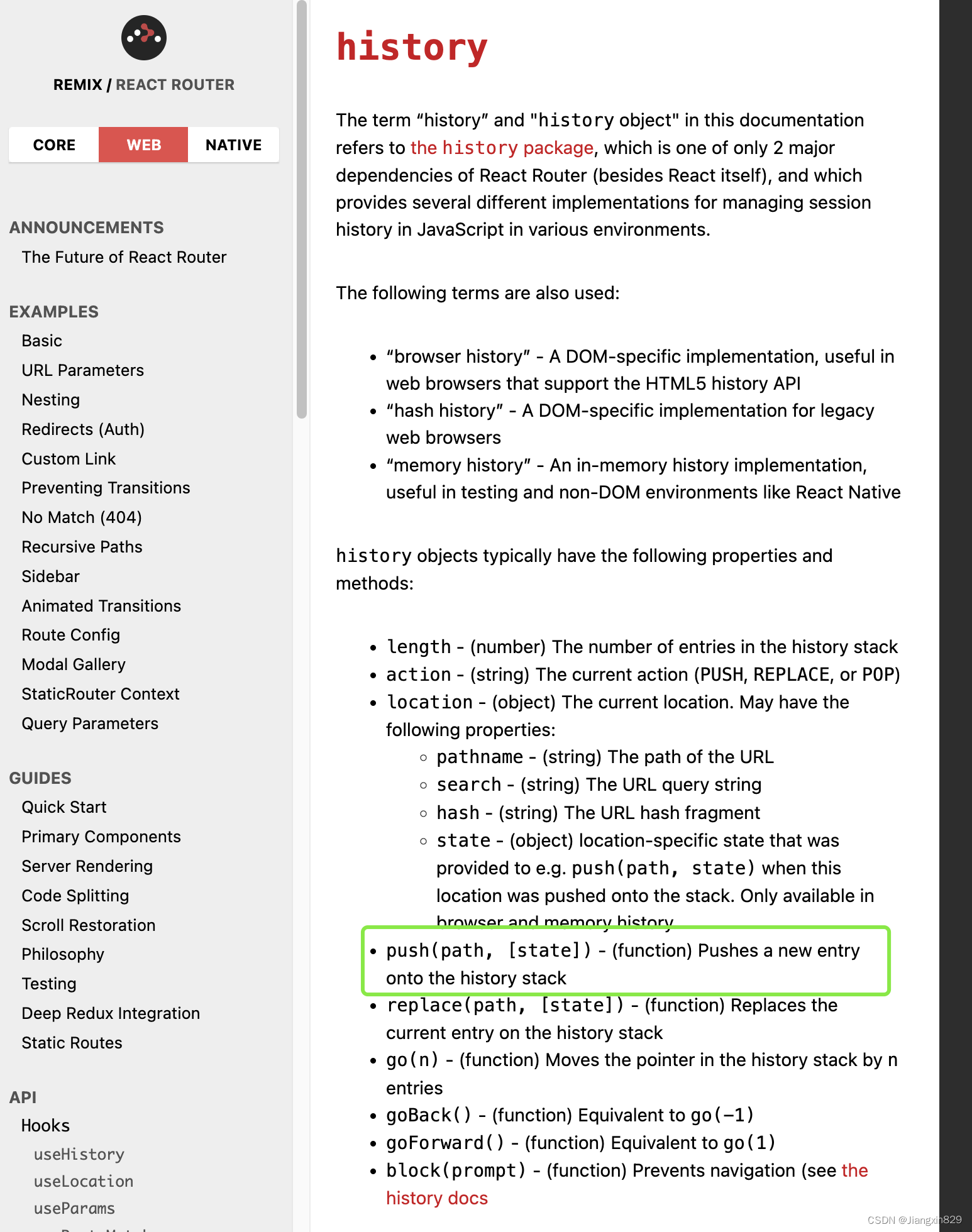
ReactRouterv5在BrowserRouter和HashRouter模式下对location.state的支持
结论:HashRouter不支持location.state 文档:ReactRouter v5 从文档可看到history.push()方法支持2个参数:path, [state] state即是location.state,常用于隐式地传递状态参数 但文档未提的是,仅适用于BrowserRouter&am…...
运动设置命令Motion Setup Commands)
Aerotech系列文章(3)运动设置命令Motion Setup Commands
1.运动设置命令Motion Setup Commands 斜坡类型: 直线,S曲线,与正弦曲线 Enumerator: RAMPTYPE_Linear Linear-based ramp type. RAMPTYPE_Scurve S-curve-based ramp type. RAMPTYPE_Sine Sine-based ramp type. 函数原型&a…...

线性神经网络——softmax 回归随笔【深度学习】【PyTorch】【d2l】
文章目录 3.2、softmax 回归3.2.1、softmax运算3.2.2、交叉熵损失函数3.2.3、PyTorch 从零实现 softmax 回归3.2.4、简单实现 softmax 回归 3.2、softmax 回归 3.2.1、softmax运算 softmax 函数是一种常用的激活函数,用于将实数向量转换为概率分布向量。它在多类别…...
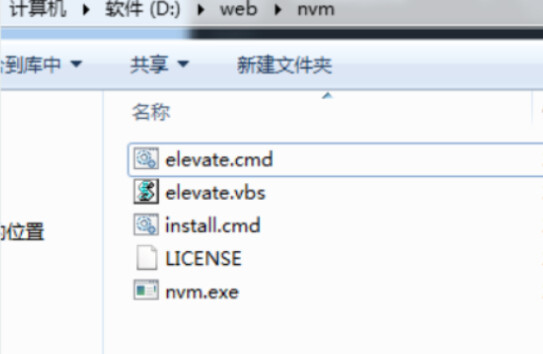
【Nodejs】Node.js开发环境安装
1.版本介绍 在命令窗口中输入 node -v 可以查看版本 0.x 完全不技术 ES64.x 部分支持 ES6 特性5.x 部分支持ES6特性(比4.x多些),属于过渡产品,现在来说应该没有什么理由去用这个了6.x 支持98%的 ES6 特性8.x 支持 ES6 特性 2.No…...
简介及Python实现)
梅尔频谱(Mel spectrum)简介及Python实现
梅尔频谱(Mel spectrum)简介及Python实现 1. 梅尔频谱(Mel spectrum)简介2. Python可视化测试3.频谱可视化3.1 Mel 频谱可视化3.2 STFT spectrum参考文献资料1. 梅尔频谱(Mel spectrum)简介 在信号处理上,声信号(噪声信号)是一种重要的传感监测手段。对于语音分类任务…...

【数据结构】实验六:队列
实验六 队列 一、实验目的与要求 1)熟悉C/C语言(或其他编程语言)的集成开发环境; 2)通过本实验加深对队列的理解,熟悉基本操作; 3) 结合具体的问题分析算法时间复杂度。 二、…...

【Linux线程】第一章||理解线程概念+创建一个线程(附代码加讲解)
线程概念 🌵什么是线程🌲线程和进程的关系🎄线程有以下特点:🌳 线程的优点🌴 线程的缺点🌱线程异常🌿线程用途 ☘️手动创建一个进程🍀运行 🌵什么是线程 在L…...

Android进阶之微信扫码登录
遇到新需求要搭建微信扫码登录功能,这篇文章是随着我的编码过程一并写的,希望能够帮助有需求的人和以后再次用到此功能的自己。 首先想到的就是百度各种文章,当然去开发者平台申请AppID和密钥是必不可少的,等注册好发现需要创建应用以及审核(要官网,流程图及其他信息),想着先写…...

macOS Monterey 12.6.8 (21G725) Boot ISO 原版可引导镜像
macOS Monterey 12.6.8 (21G725) Boot ISO 原版可引导镜像 本站下载的 macOS 软件包,既可以拖拽到 Applications(应用程序)下直接安装,也可以制作启动 U 盘安装,或者在虚拟机中启动安装。另外也支持在 Windows 和 Lin…...

Unity自定义后处理——用偏导数求图片颜色边缘
大家好,我是阿赵。 继续介绍屏幕后处理效果的做法。这次介绍一下用偏导数求图形边缘的技术。 一、原理介绍 先来看例子吧。 这个例子看起来好像是要给模型描边。之前其实也介绍过很多描边的方法,比如沿着法线方向放大模型,或者用Ndo…...

本地Git仓库和GitHub仓库SSH传输
SSH创建命令解释 ssh-keygen 用于创建密钥的程序 -m PEM 将密钥的格式设为 PEM -t rsa 要创建的密钥类型,本例中为 RSA 格式 -b 4096 密钥的位数,本例中为 4096 -C “azureusermyserver” 追加到公钥文件末尾以便于识别的注释。 通常以电子邮件地址…...

【C++11】——右值引用、移动语义
目录 1. 基本概念 1.1 左值与左值引用 1.2 右值和右值引用 1.3 左值引用与右值引用 2. 右值引用实用场景和意义 2.1 左值引用的使用场景 2.2 左值引用的短板 2.3 右值引用和移动语义 2.3.1 移动构造 2.3.2 移动赋值 2.3.3 编译器做的优化 2.3.4 总结 2.4 右值引用…...
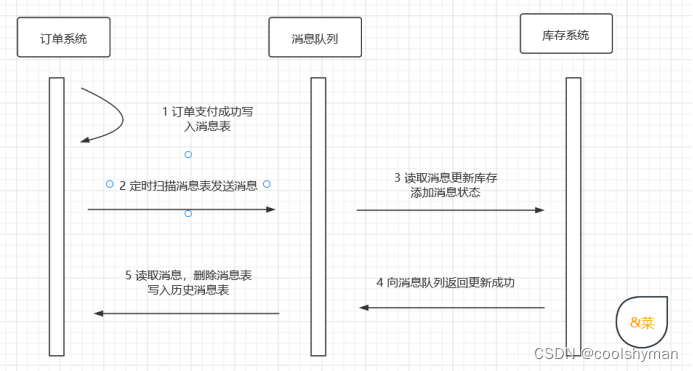
消息服务概述
消息服务的作用: 在多数应用尤其是分布式系统中,消息服务是不可或缺的重要部分,它使用起来比较简单,同时解决了不少难题,例如异步处理、应用解耦、流量削锋、分布式事务管理等,使用消息服务可以实现一个高…...
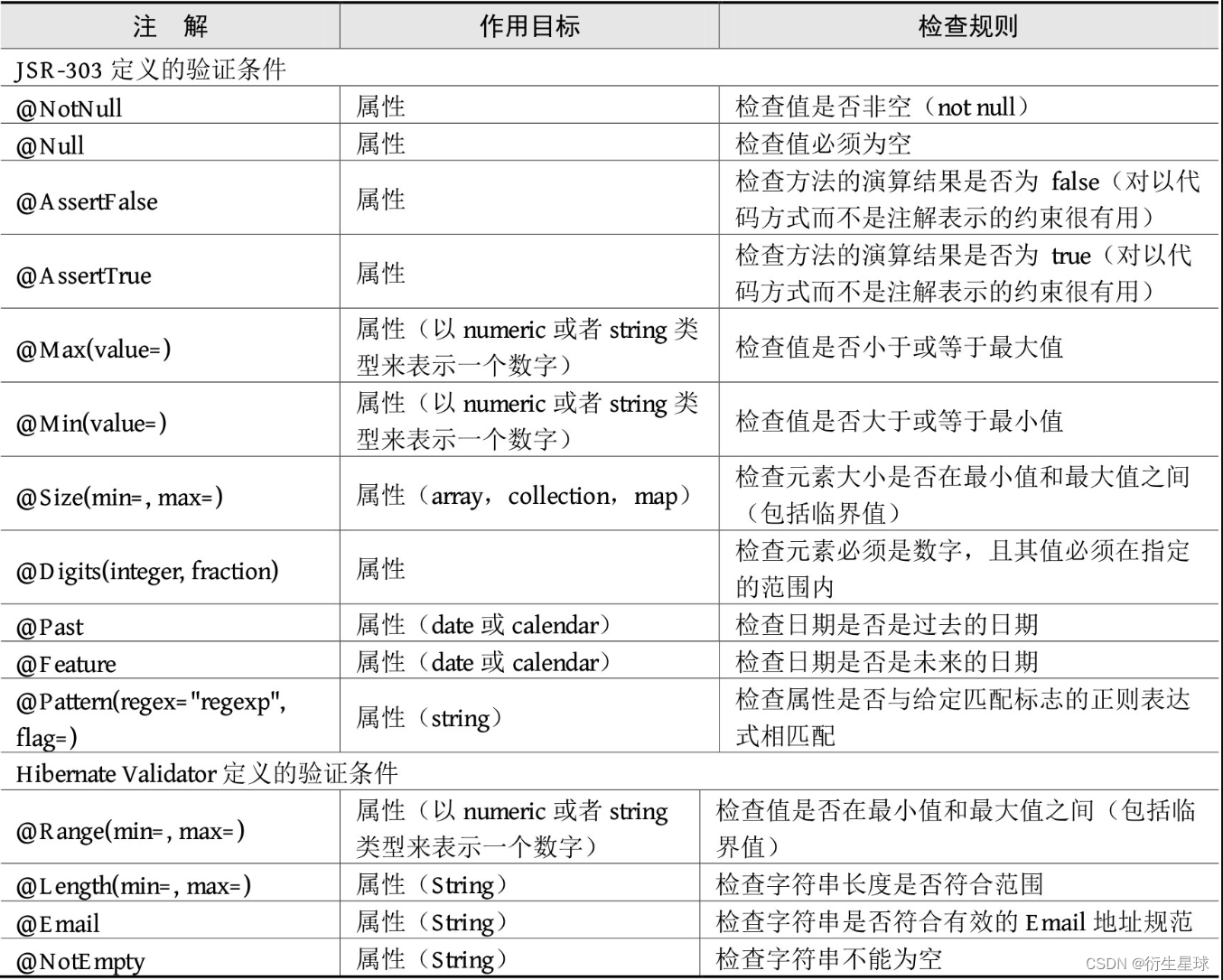
【Spring Boot】Web开发 — 数据验证
Web开发 — 数据验证 对于应用系统而言,任何客户端传入的数据都不是绝对安全有效的,这就要求我们在服务端接收到数据时也对数据的有效性进行验证,以确保传入的数据安全正确。接下来介绍Spring Boot是如何实现数据验证的。 1.Hibernate Vali…...
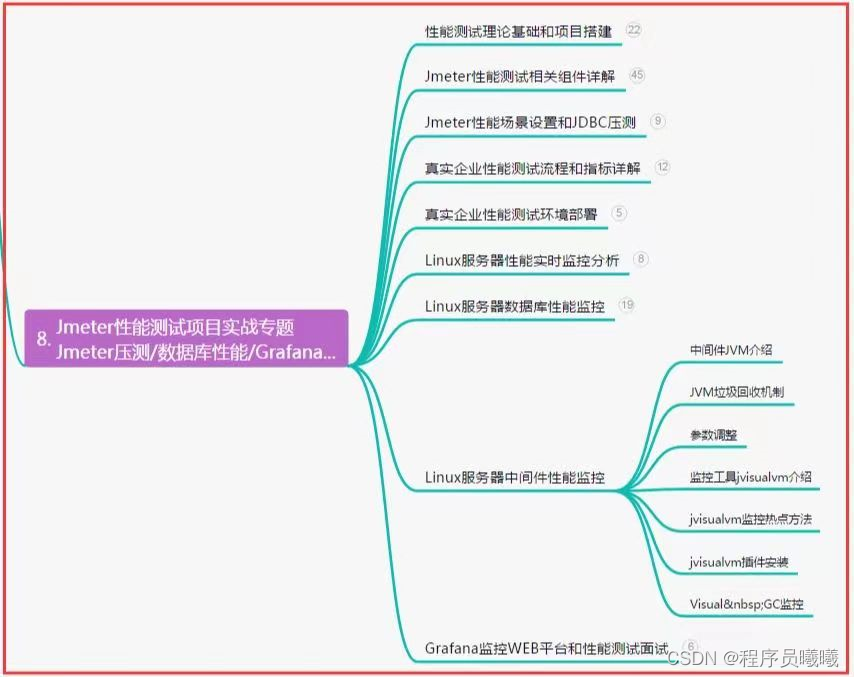
技术分享 | App常见bug解析
功能Bug 内容显示错误 前端页面展示的内容有误。 这种错误的产生有两种可能 1、前端代码写的文案错误 2、接口返回值错误 功能错误 功能错误是在测试过程中最常见的类型之一,也就是产品的功能没有实现。比如图中的公众号登录不成功的问题。 界面展示错乱 产…...

树莓派Pico|RP2040|使用SWD进行调试|构建 “Hello World“ debug版本
文章目录 使用SWD进行调试构建 "Hello World" debug版本安装 GDB使用 GDB 和 OpenOCD 来 debug Hello World TIP重要提示 使用SWD进行调试 基于rp2040的板上的SWD端口重置,加载和运行代码,如树莓派Pico可用于交互式调试已加载的程序。这包括:…...

Ubuntu18.04 下配置Clion
配置Clion 安装gcc、g、make Ubuntu中用到的编译工具是gcc©,g(C),make(连接)。因此只需安装对应的工具包即可。Ubuntu下使用命令安装这些包: (1)安装gcc sudo apt install gcc&am…...

数据库管理-第九十四期 19c OCM之路-第四堂(02)(20230725)
第九十四期 19c OCM之路-第四堂(02)(20230725) 第四堂继续! 考点3:SQL statement tuning SQL语句调优 收集Schema统计信息 exec dbms_stats.gather_schems_stats(HR);开启制定表索引监控 create index…...

以智慧监测模式守护燃气安全 ,汉威科技“传感芯”凸显智慧力
城市燃气工程作为城市基建的重要组成部分,与城市居民生活、工业生产紧密相关。提升城市燃气服务质量和安全水平,也一直是政府和民众关注的大事。然而,近年来居民住宅、餐饮等工商业场所燃气事故频发,时刻敲响的警钟也折射出我国在…...
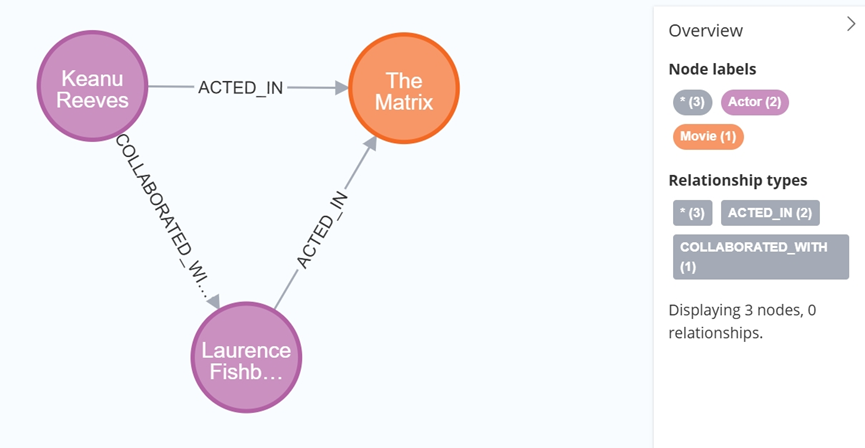
大数据学习栈记——Neo4j的安装与使用
本文介绍图数据库Neofj的安装与使用,操作系统:Ubuntu24.04,Neofj版本:2025.04.0。 Apt安装 Neofj可以进行官网安装:Neo4j Deployment Center - Graph Database & Analytics 我这里安装是添加软件源的方法 最新版…...
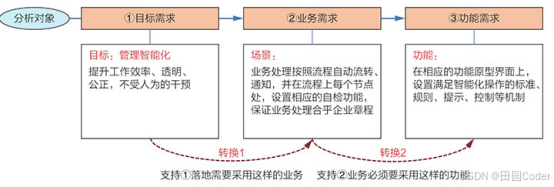
大话软工笔记—需求分析概述
需求分析,就是要对需求调研收集到的资料信息逐个地进行拆分、研究,从大量的不确定“需求”中确定出哪些需求最终要转换为确定的“功能需求”。 需求分析的作用非常重要,后续设计的依据主要来自于需求分析的成果,包括: 项目的目的…...

在四层代理中还原真实客户端ngx_stream_realip_module
一、模块原理与价值 PROXY Protocol 回溯 第三方负载均衡(如 HAProxy、AWS NLB、阿里 SLB)发起上游连接时,将真实客户端 IP/Port 写入 PROXY Protocol v1/v2 头。Stream 层接收到头部后,ngx_stream_realip_module 从中提取原始信息…...
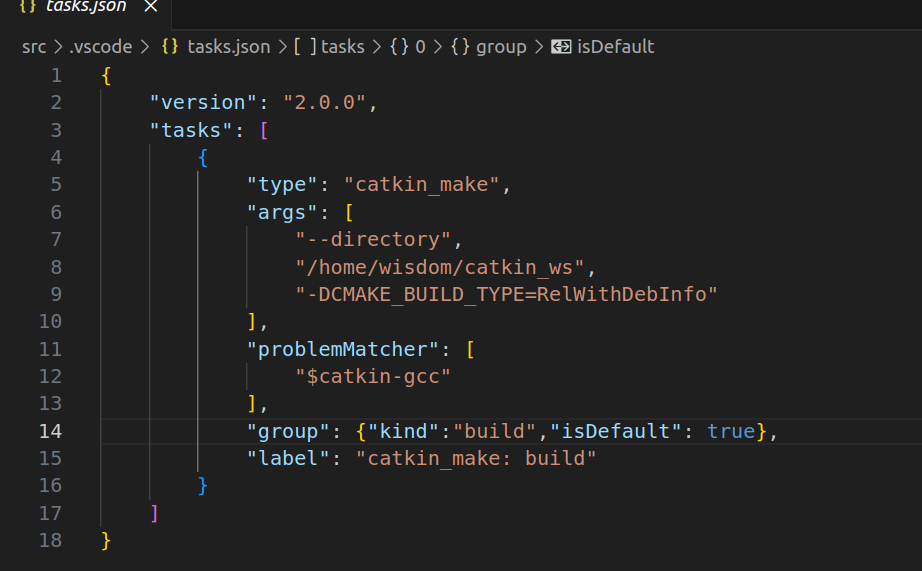
1.3 VSCode安装与环境配置
进入网址Visual Studio Code - Code Editing. Redefined下载.deb文件,然后打开终端,进入下载文件夹,键入命令 sudo dpkg -i code_1.100.3-1748872405_amd64.deb 在终端键入命令code即启动vscode 需要安装插件列表 1.Chinese简化 2.ros …...

高危文件识别的常用算法:原理、应用与企业场景
高危文件识别的常用算法:原理、应用与企业场景 高危文件识别旨在检测可能导致安全威胁的文件,如包含恶意代码、敏感数据或欺诈内容的文档,在企业协同办公环境中(如Teams、Google Workspace)尤为重要。结合大模型技术&…...

在鸿蒙HarmonyOS 5中使用DevEco Studio实现录音机应用
1. 项目配置与权限设置 1.1 配置module.json5 {"module": {"requestPermissions": [{"name": "ohos.permission.MICROPHONE","reason": "录音需要麦克风权限"},{"name": "ohos.permission.WRITE…...

如何理解 IP 数据报中的 TTL?
目录 前言理解 前言 面试灵魂一问:说说对 IP 数据报中 TTL 的理解?我们都知道,IP 数据报由首部和数据两部分组成,首部又分为两部分:固定部分和可变部分,共占 20 字节,而即将讨论的 TTL 就位于首…...

[USACO23FEB] Bakery S
题目描述 Bessie 开了一家面包店! 在她的面包店里,Bessie 有一个烤箱,可以在 t C t_C tC 的时间内生产一块饼干或在 t M t_M tM 单位时间内生产一块松糕。 ( 1 ≤ t C , t M ≤ 10 9 ) (1 \le t_C,t_M \le 10^9) (1≤tC,tM≤109)。由于空间…...
Axure零基础跟我学:展开与收回
亲爱的小伙伴,如有帮助请订阅专栏!跟着老师每课一练,系统学习Axure交互设计课程! Axure产品经理精品视频课https://edu.csdn.net/course/detail/40420 课程主题:Axure菜单展开与收回 课程视频:...

实现p2p的webrtc-srs版本
1. 基本知识 1.1 webrtc 一、WebRTC的本质:实时通信的“网络协议栈”类比 将WebRTC类比为Linux网络协议栈极具洞察力,二者在架构设计和功能定位上高度相似: 分层协议栈架构 Linux网络协议栈:从底层物理层到应用层(如…...
